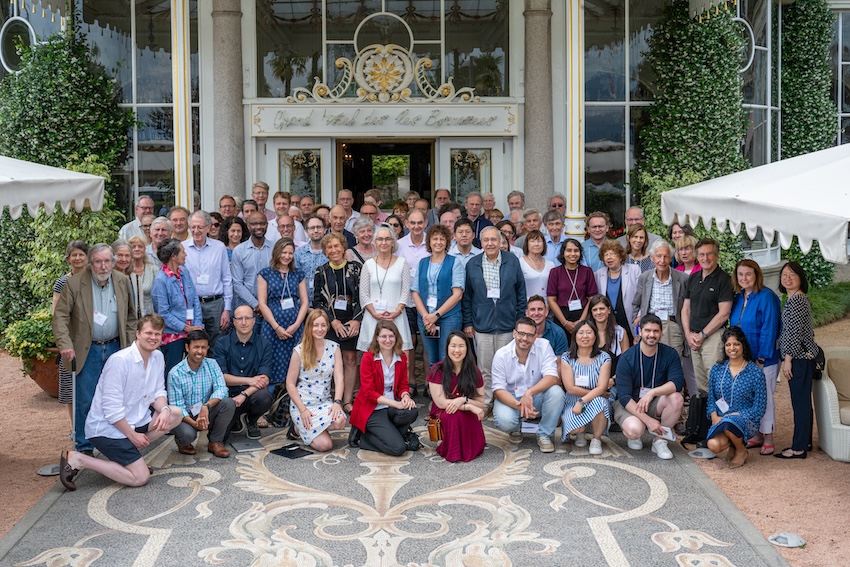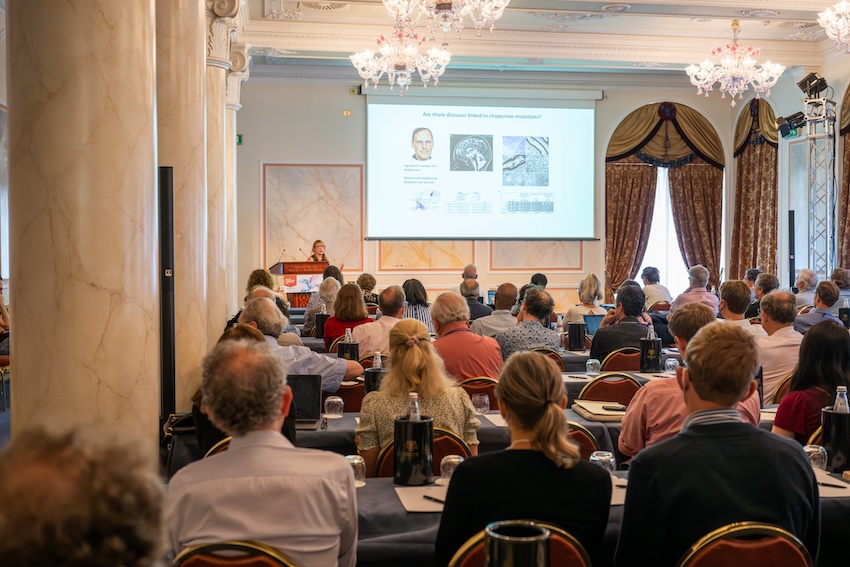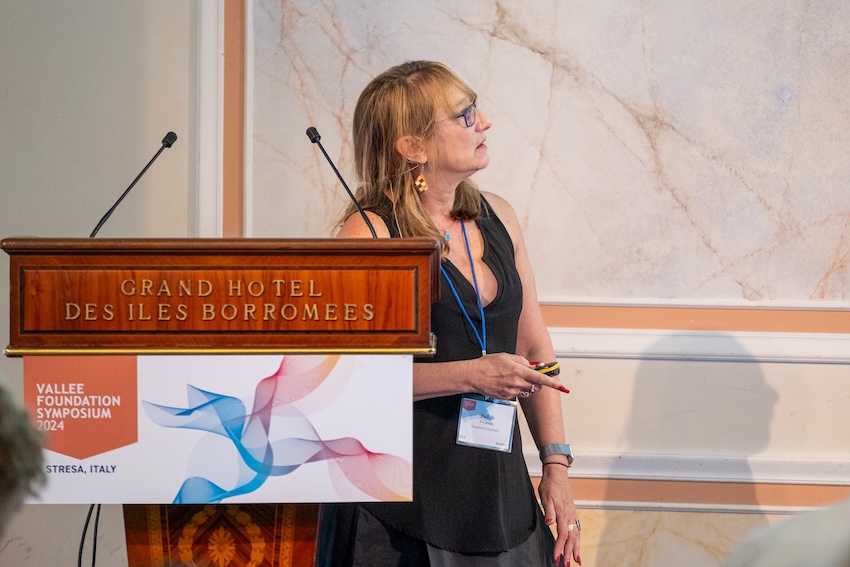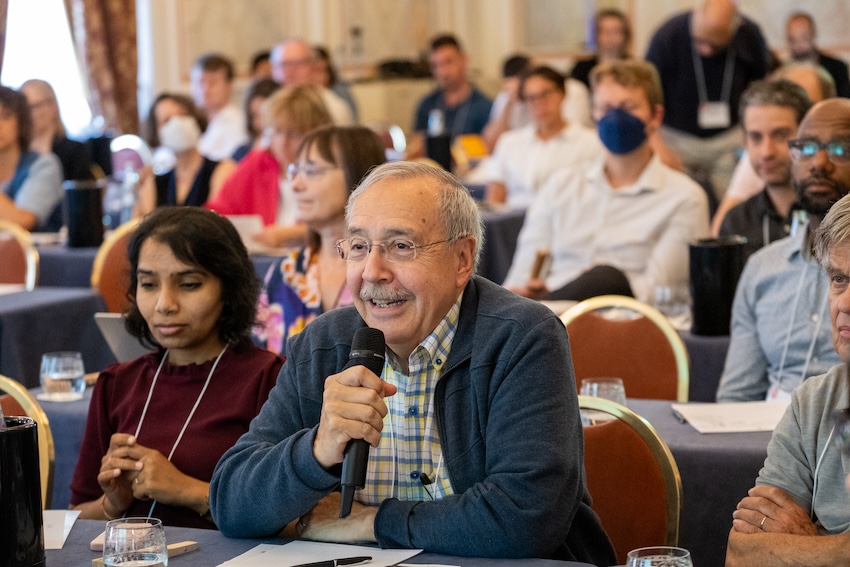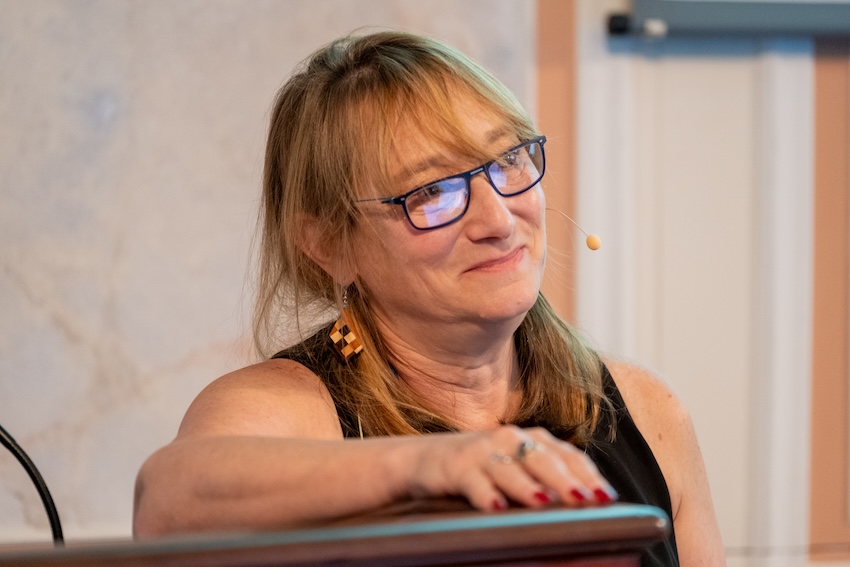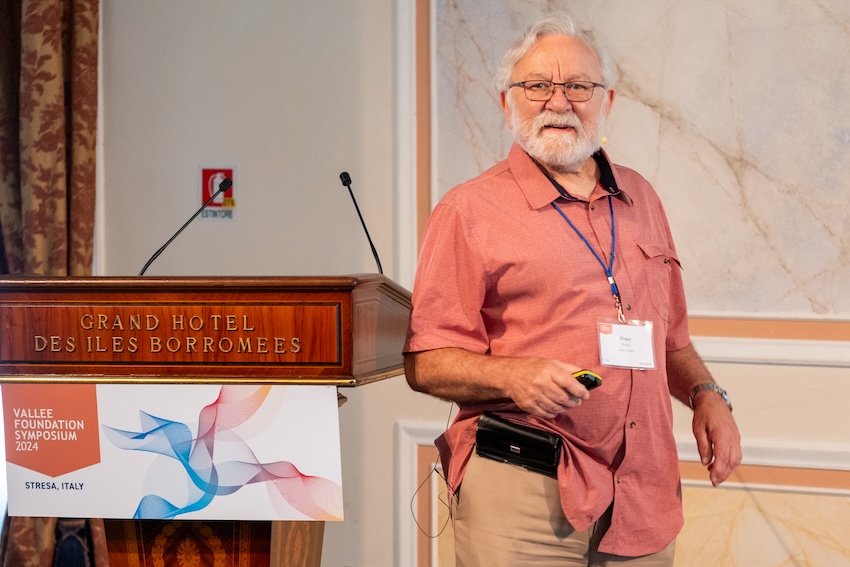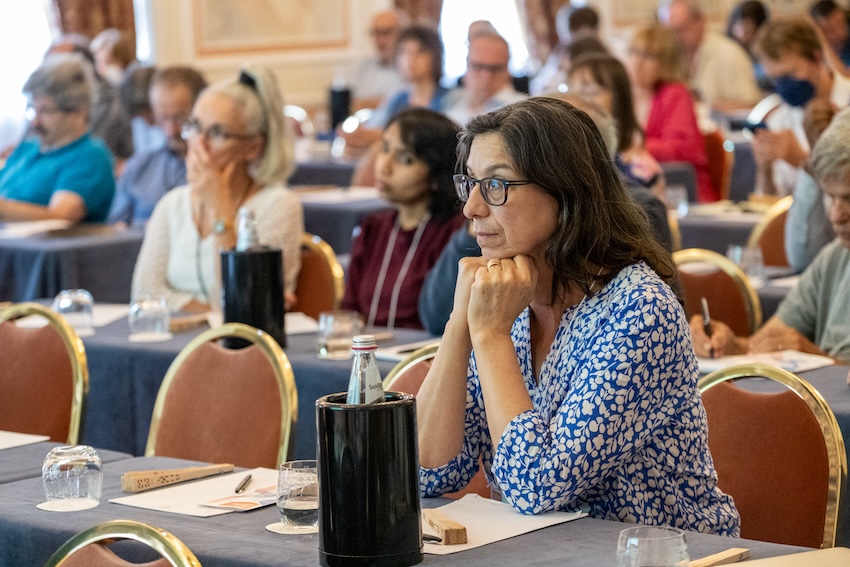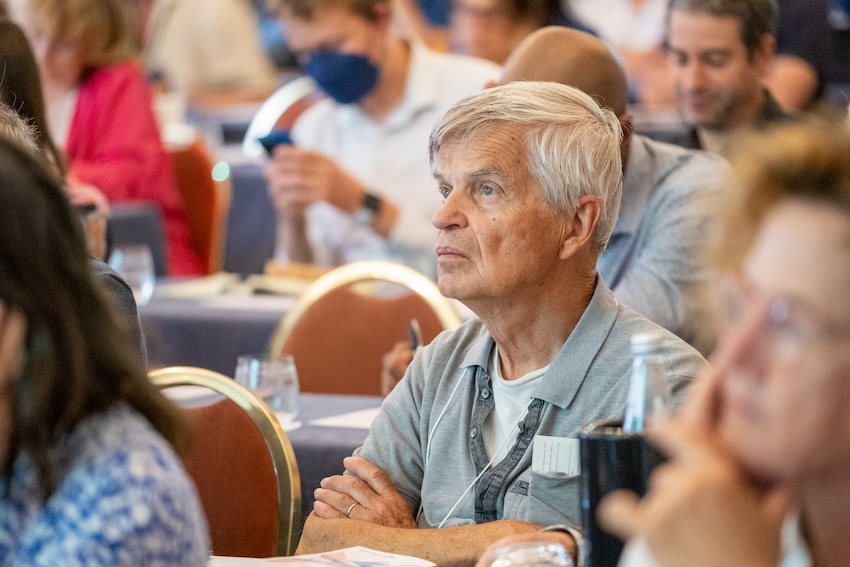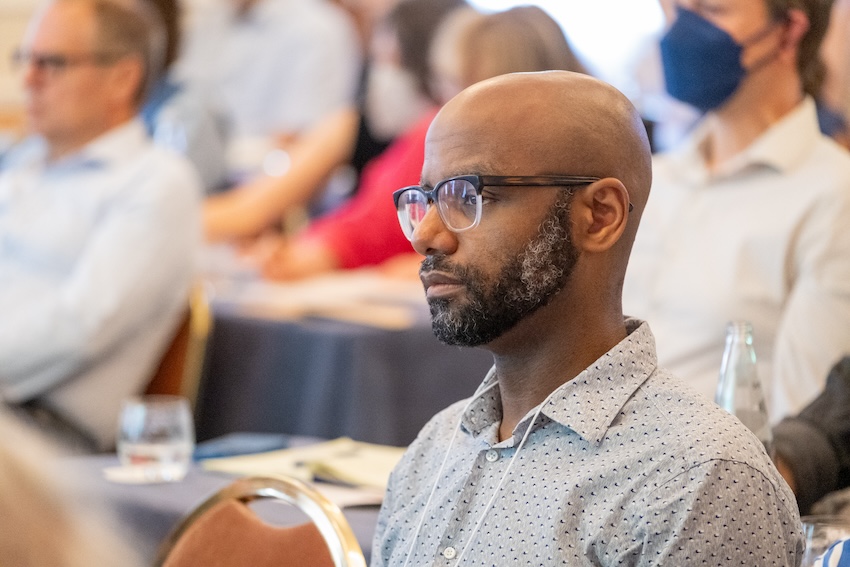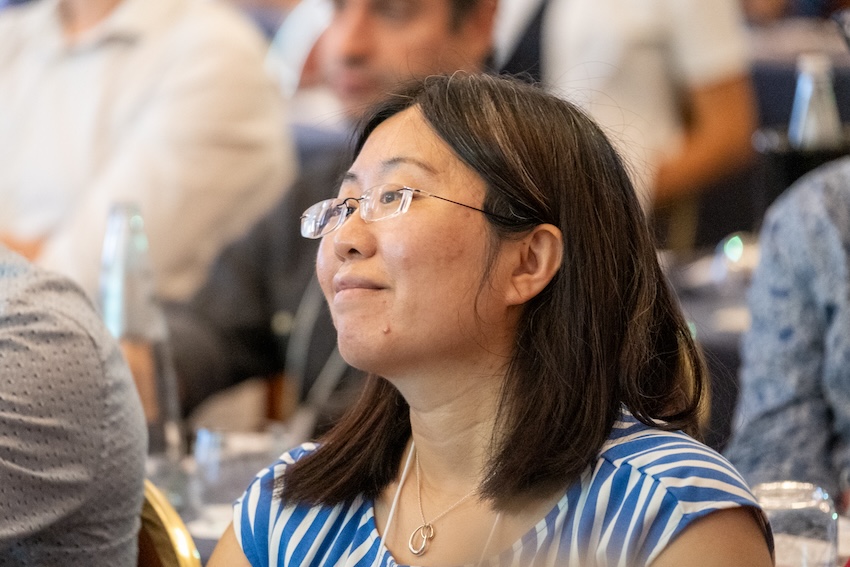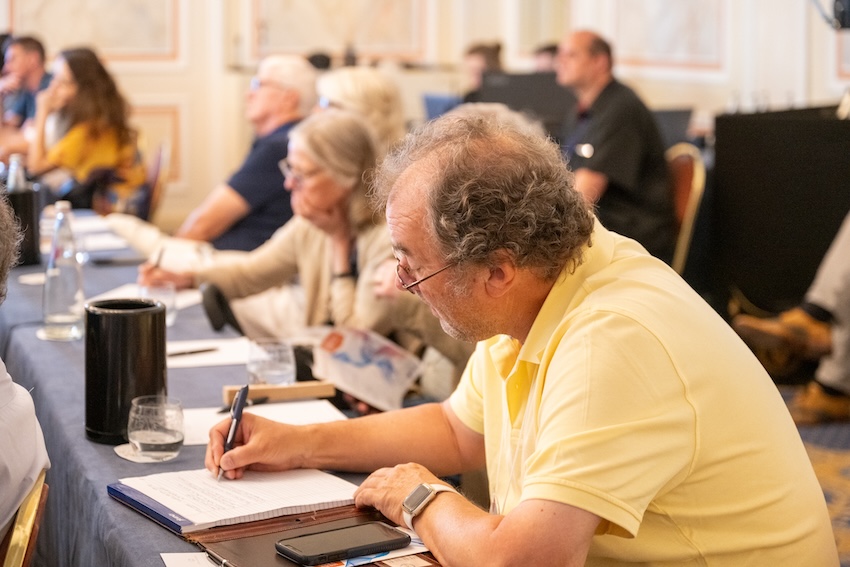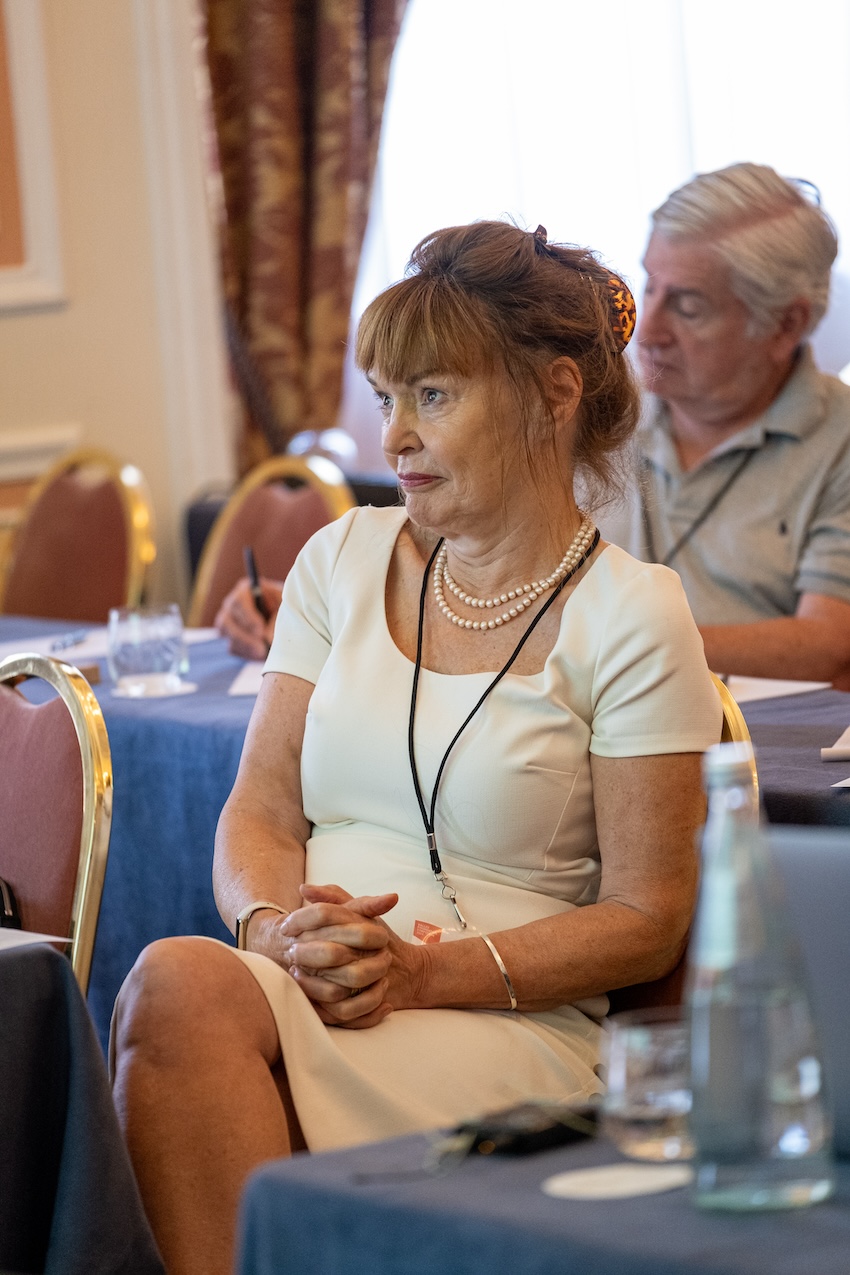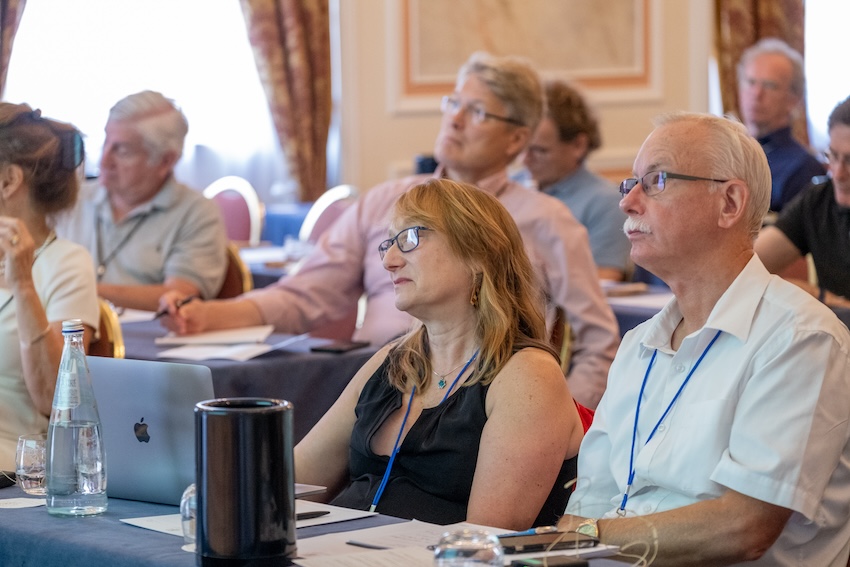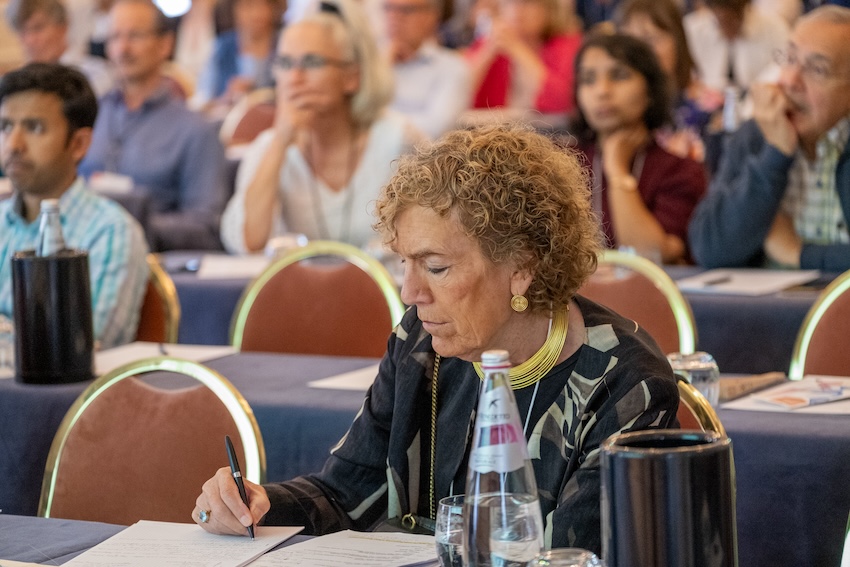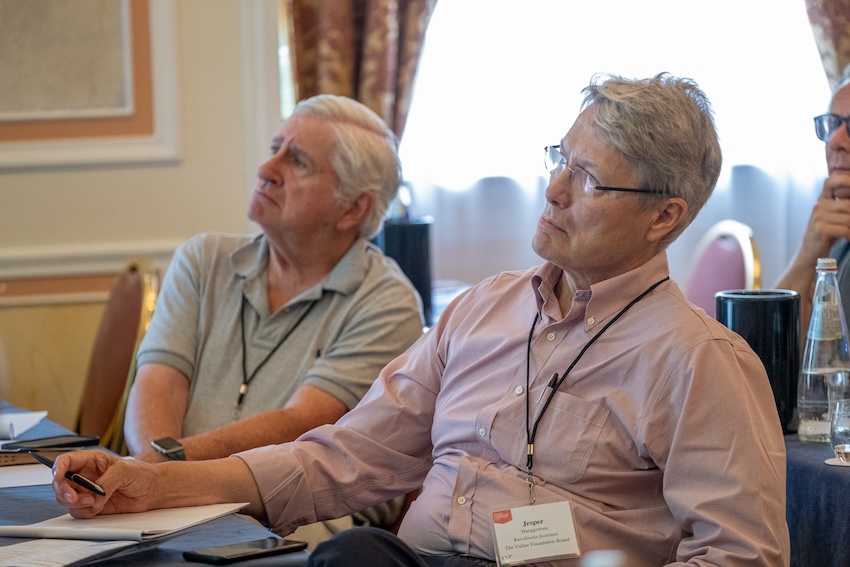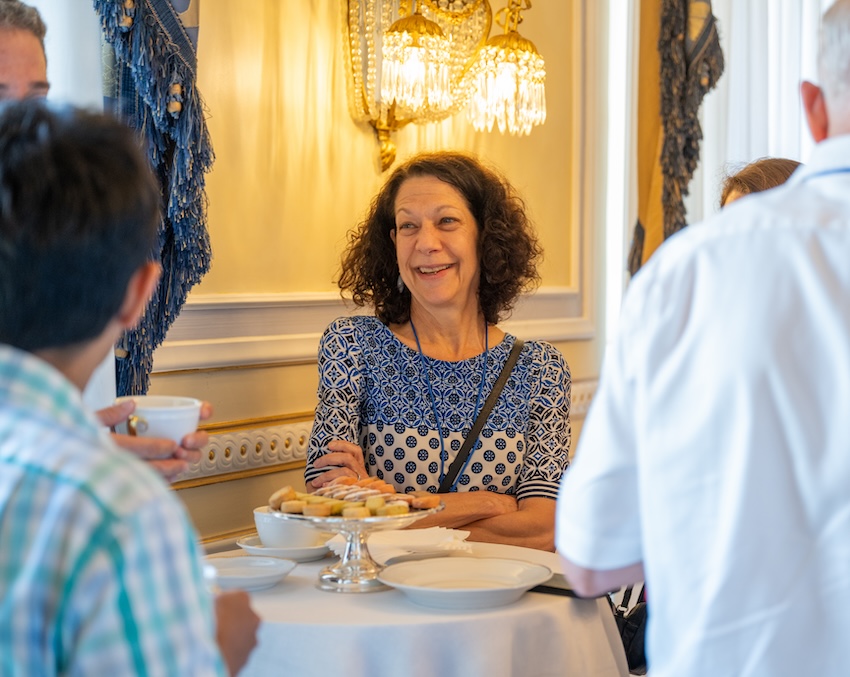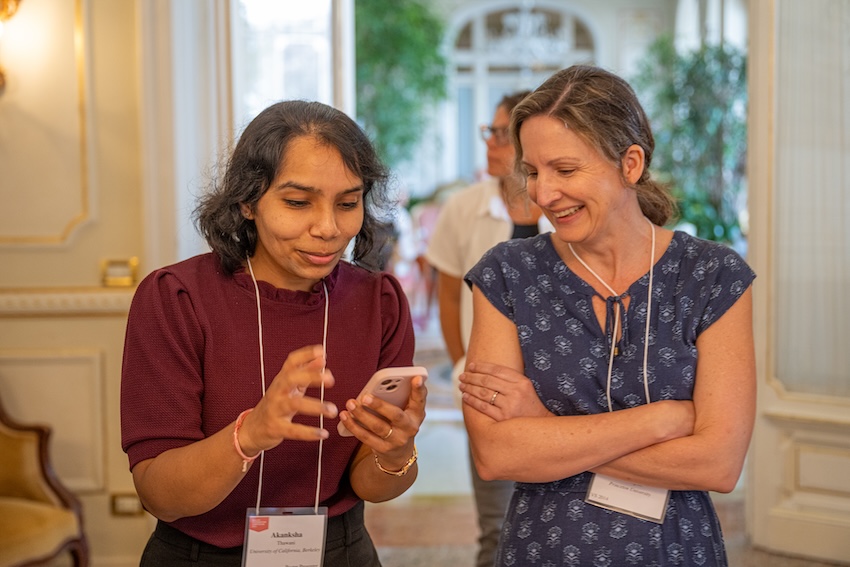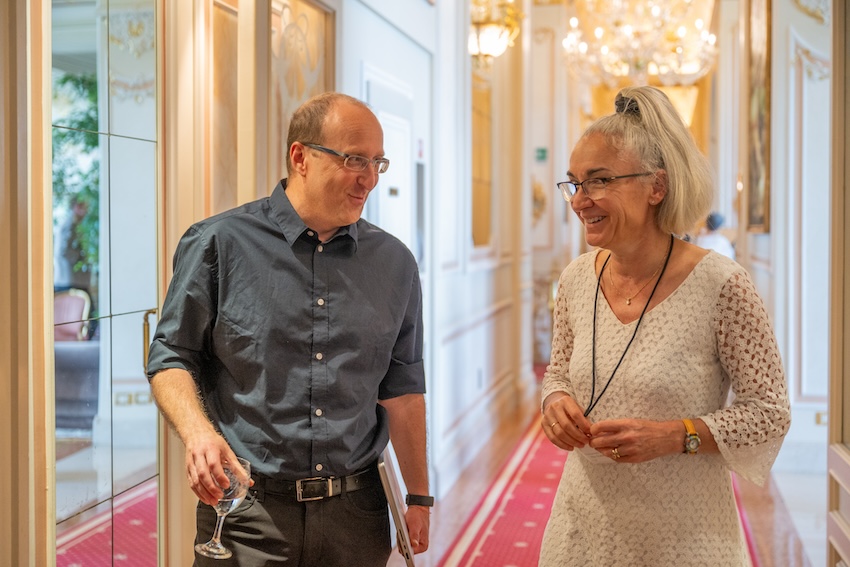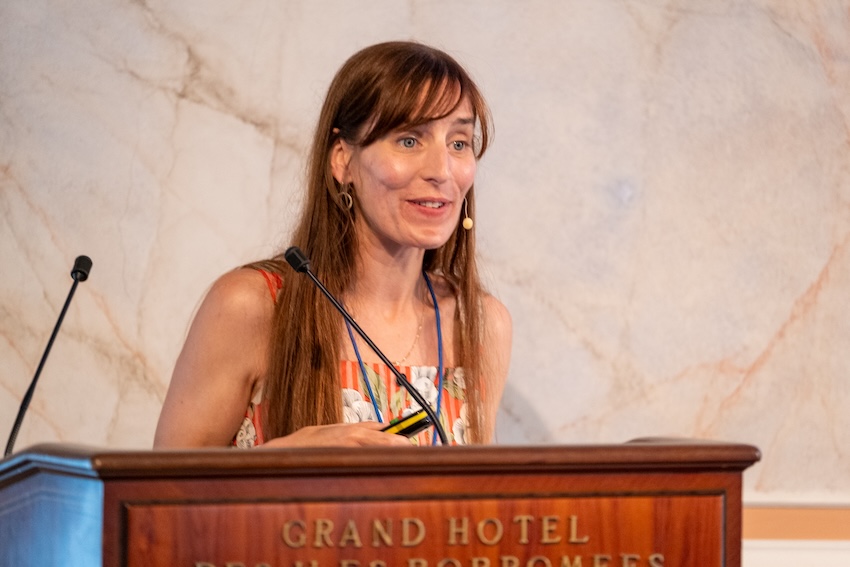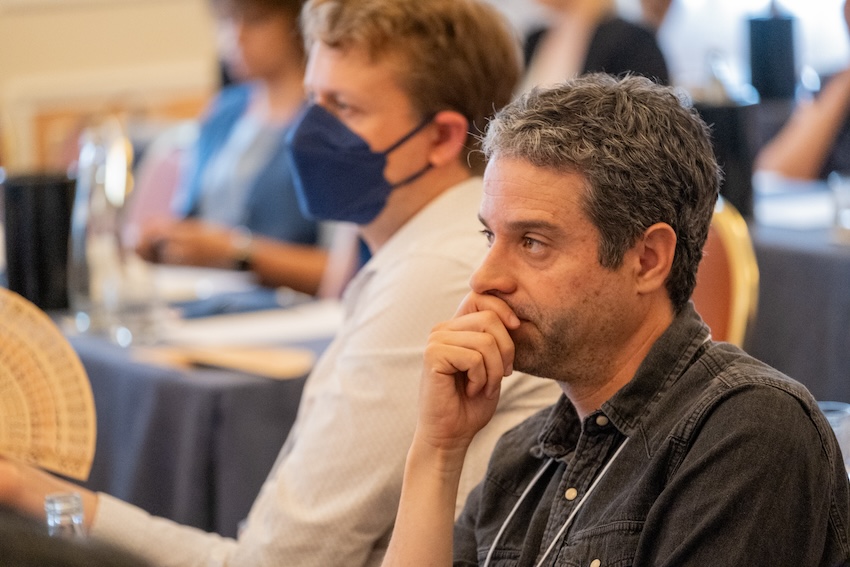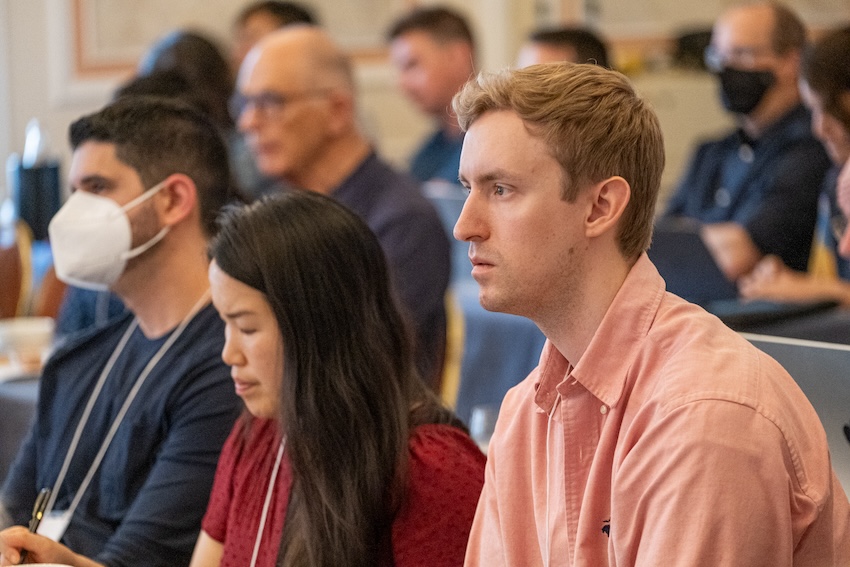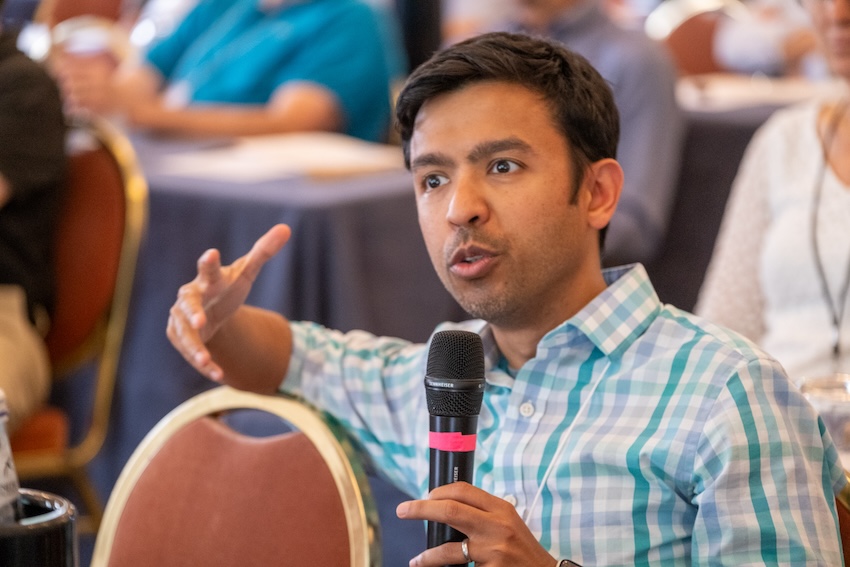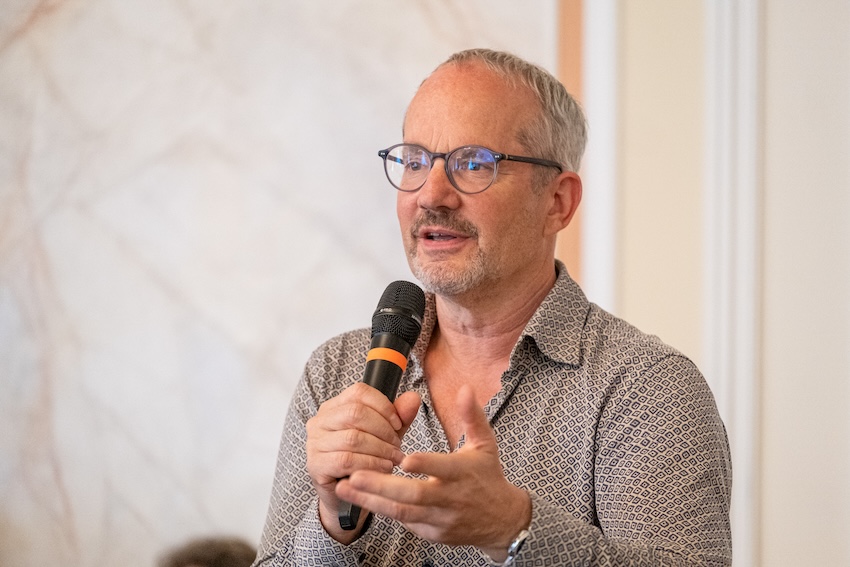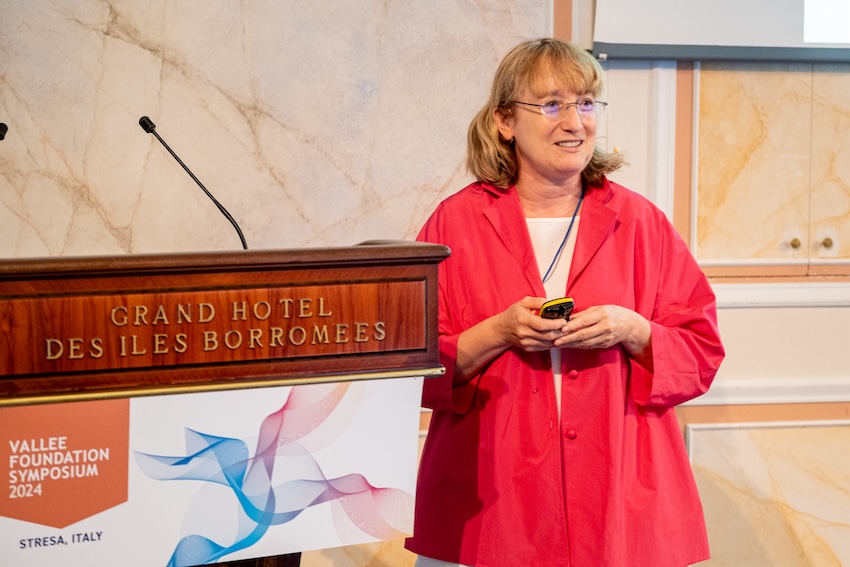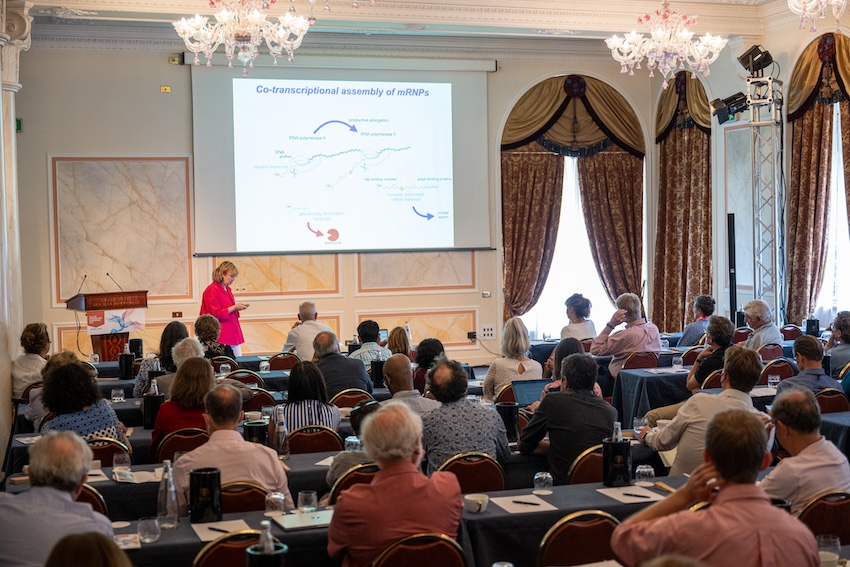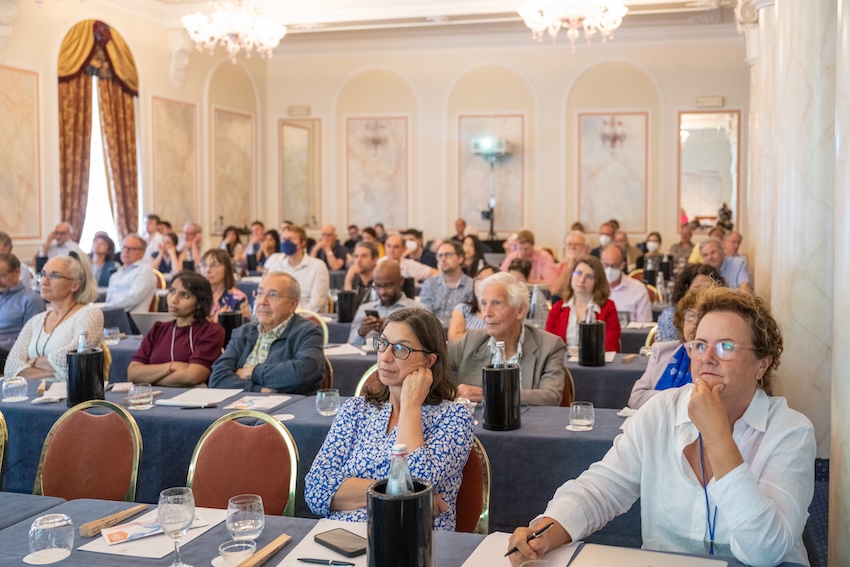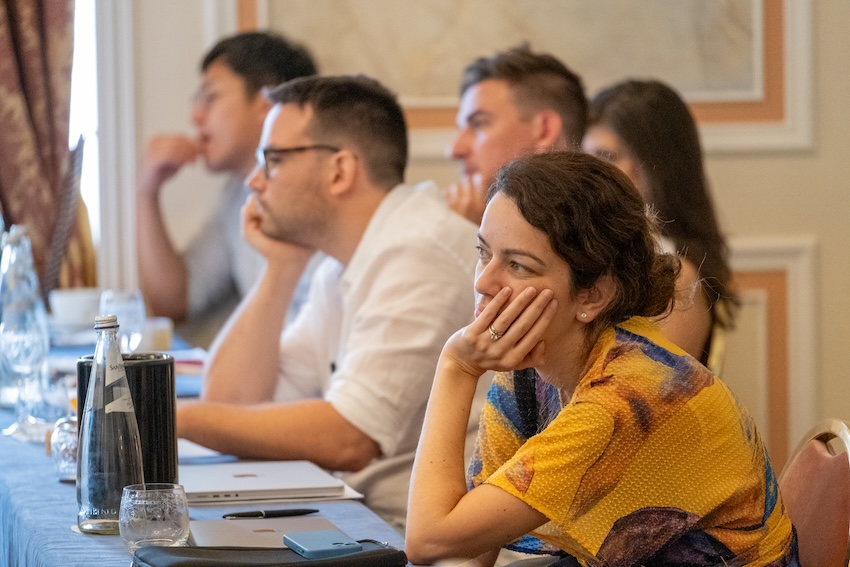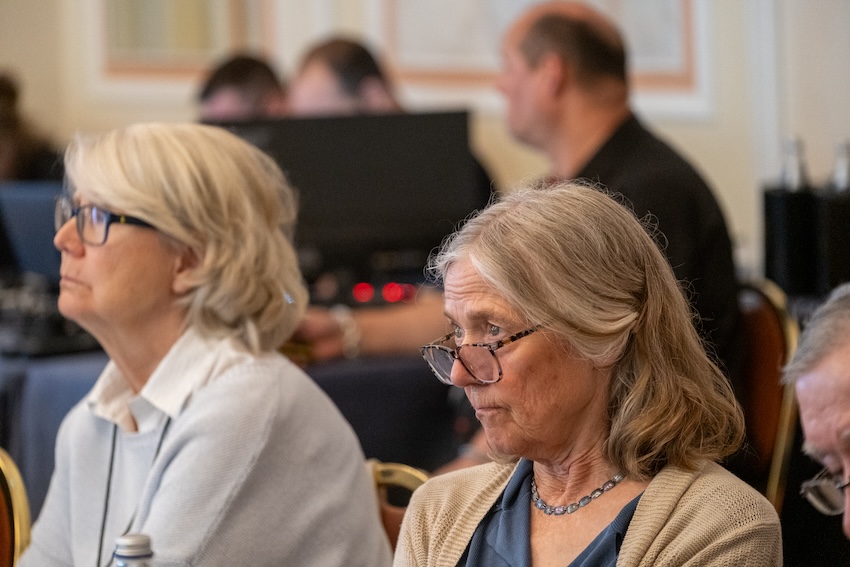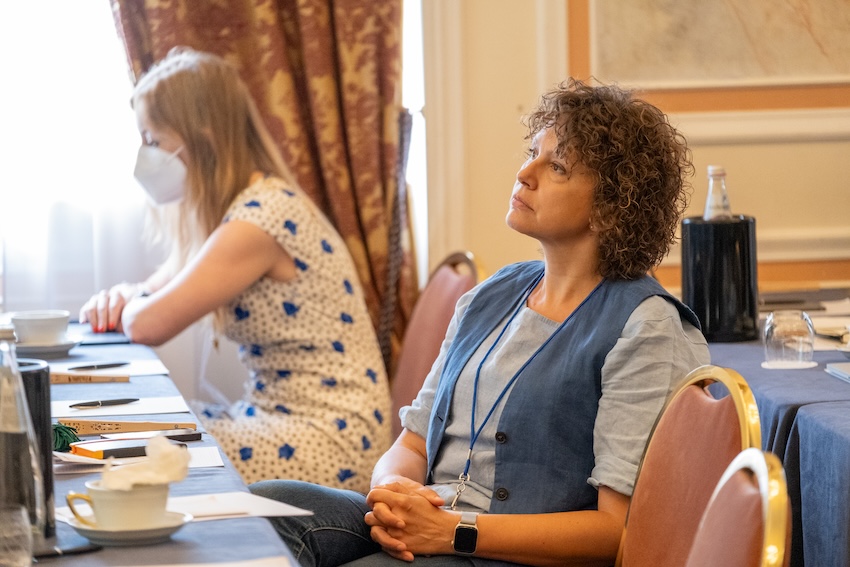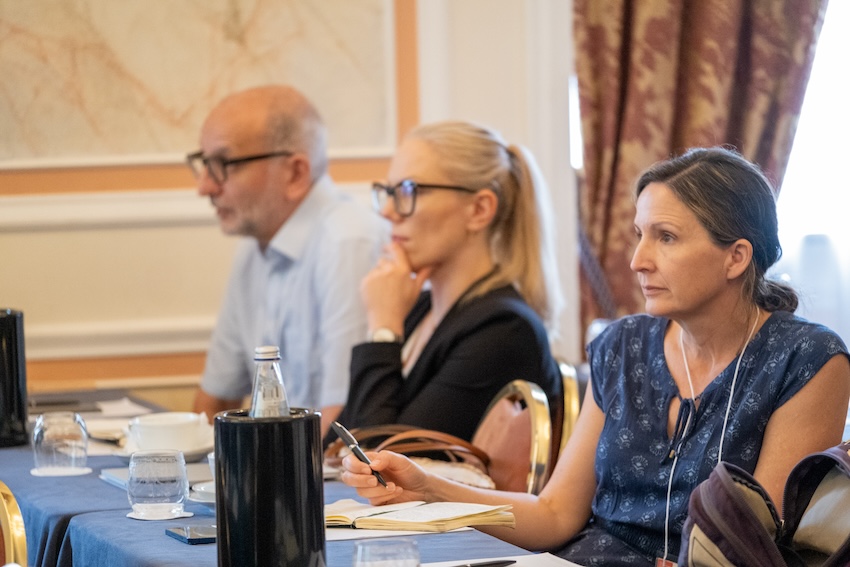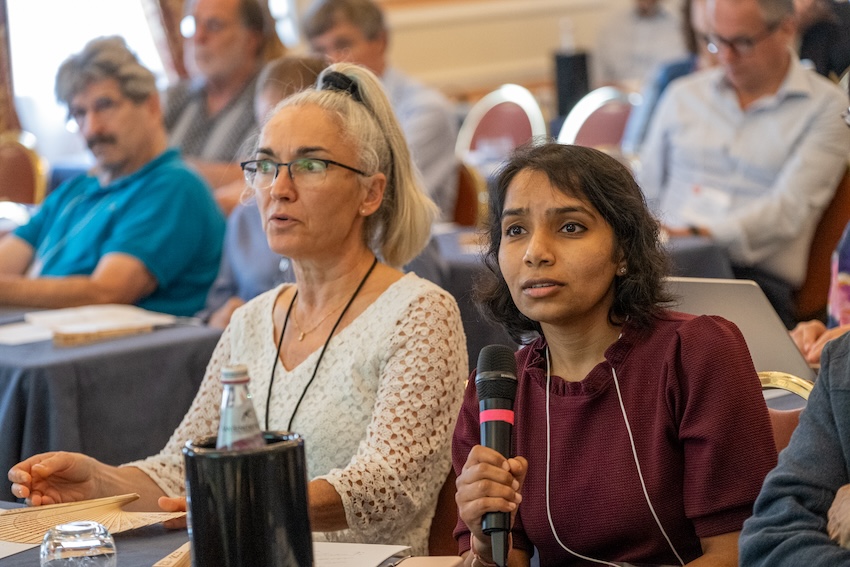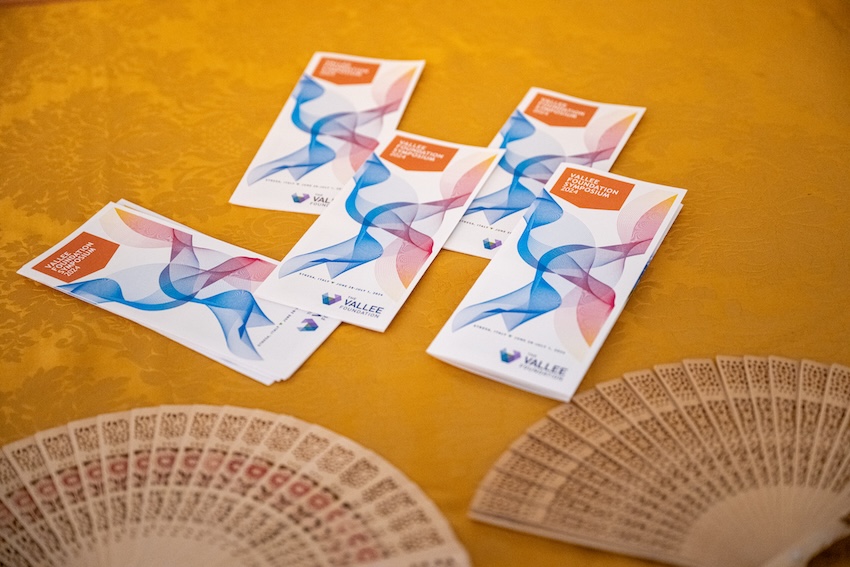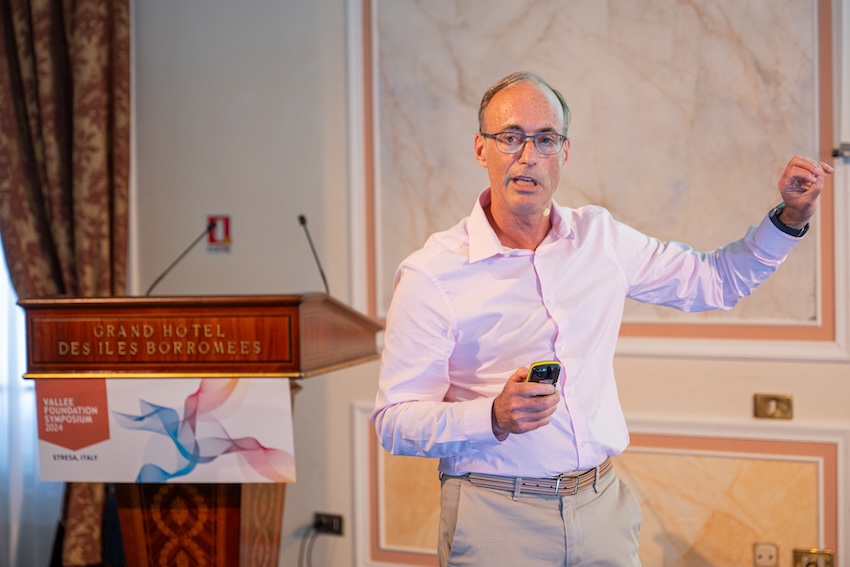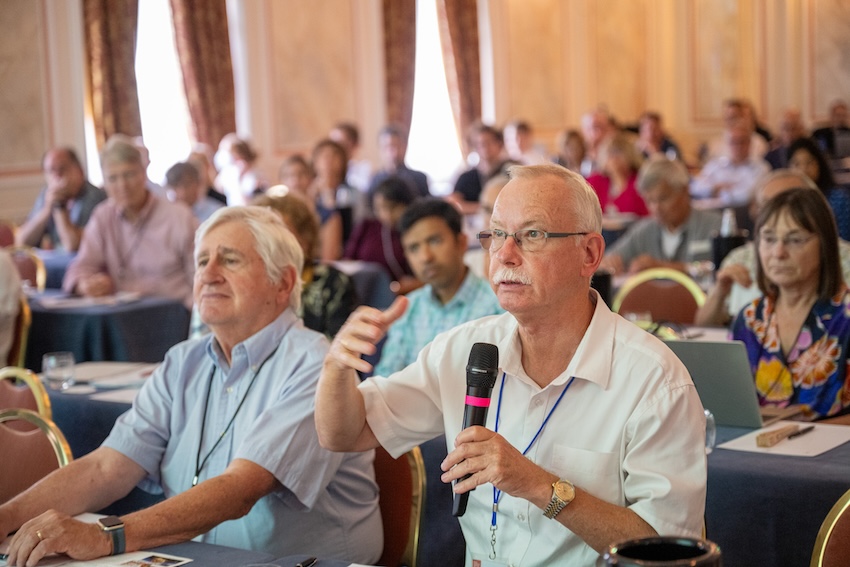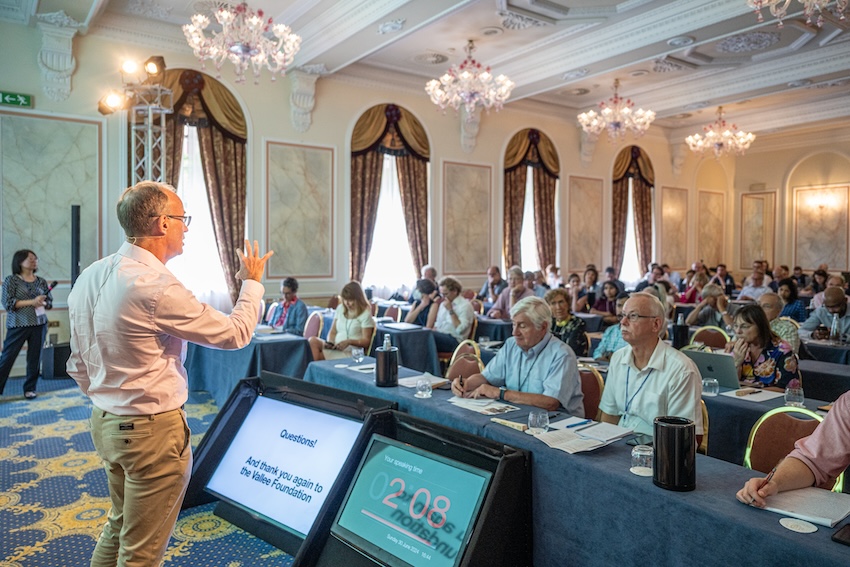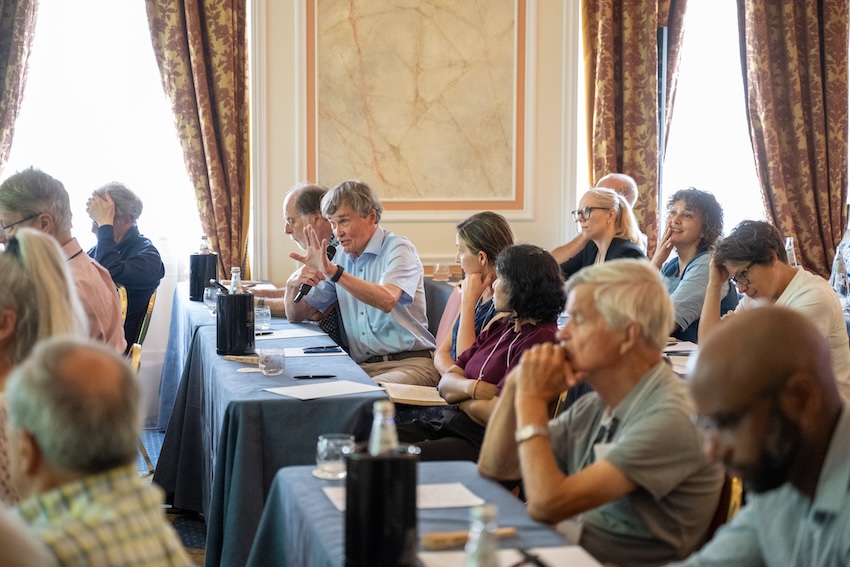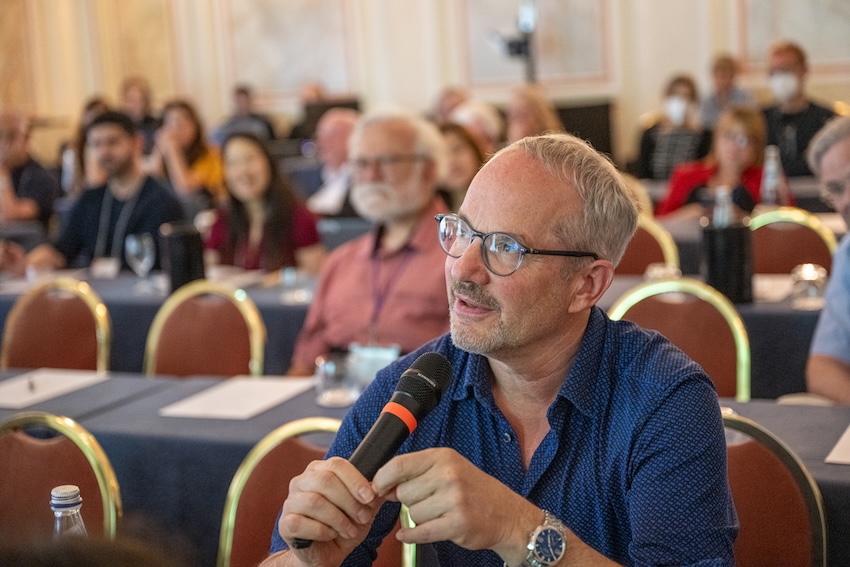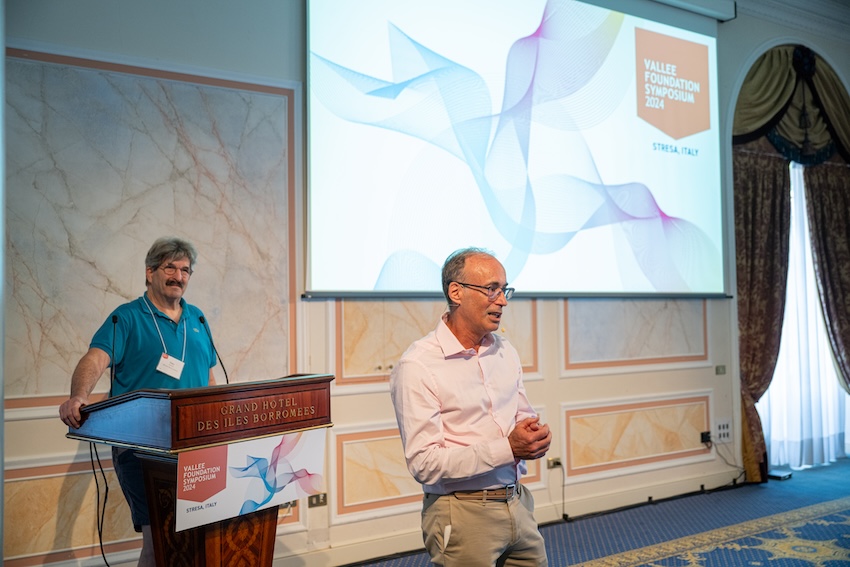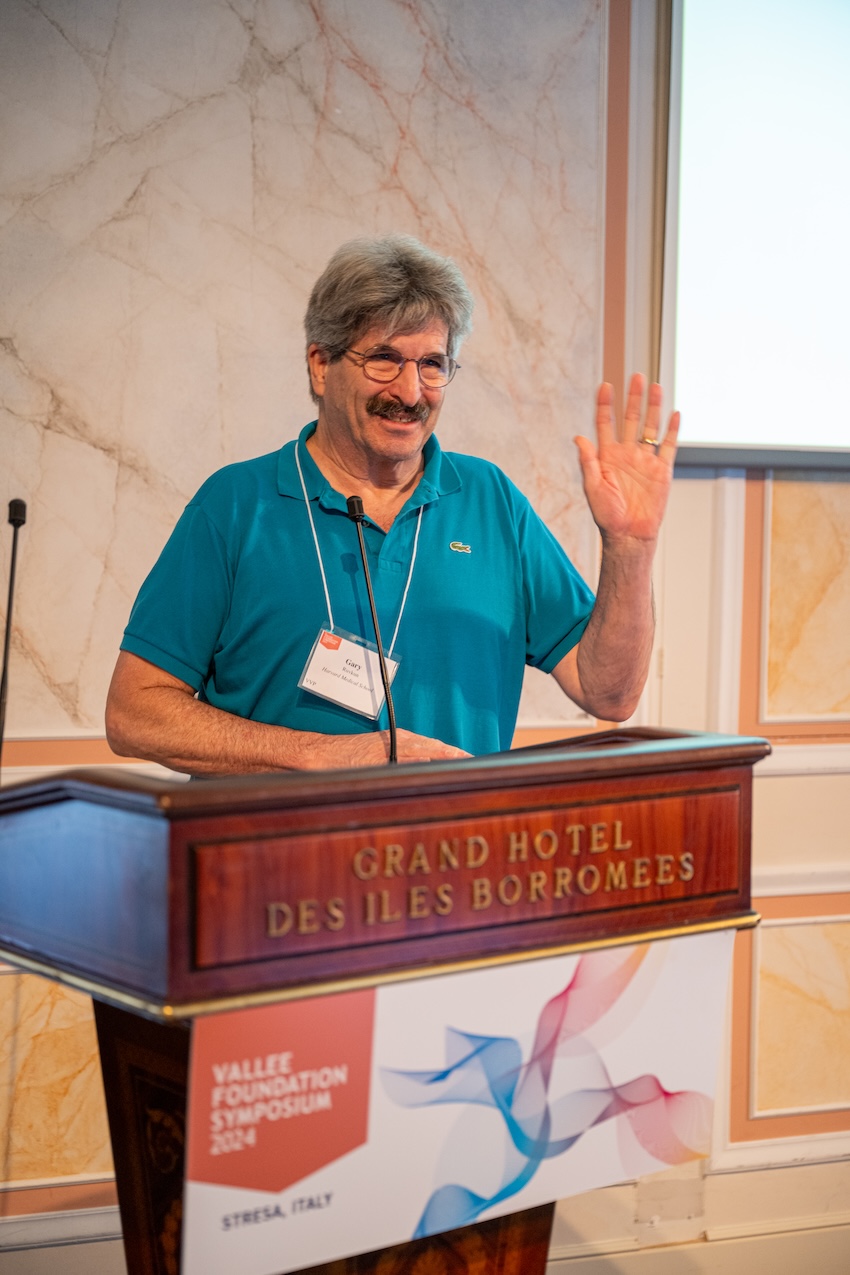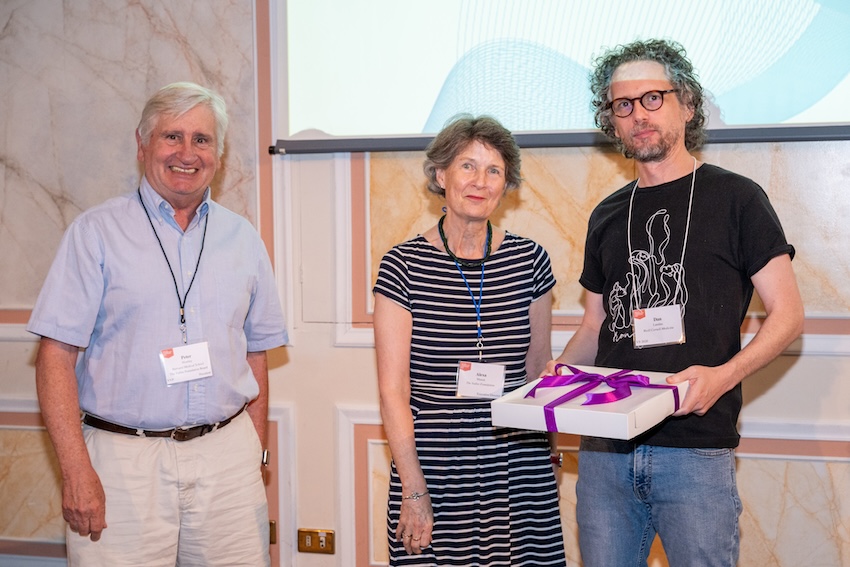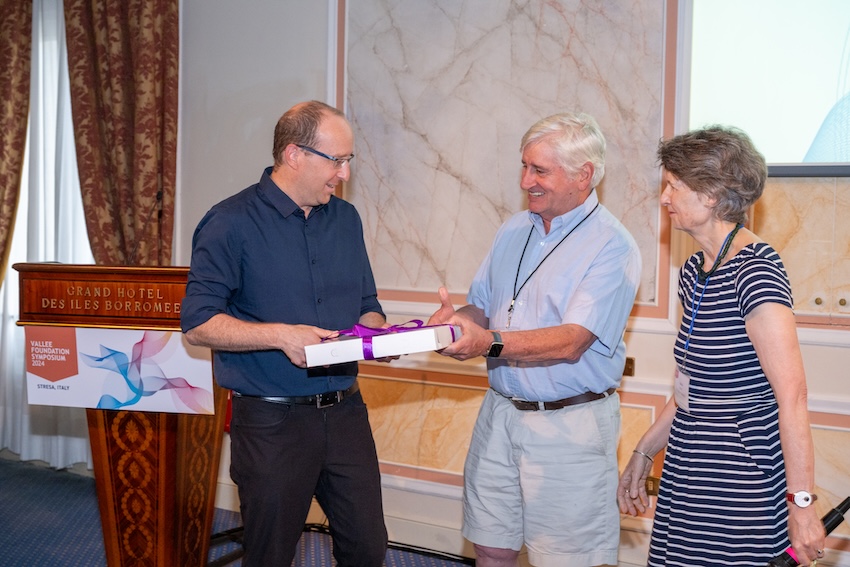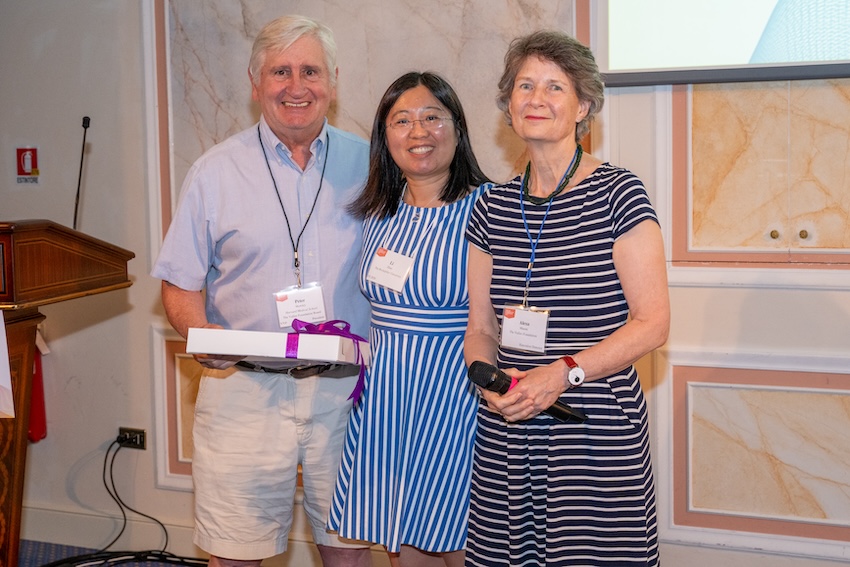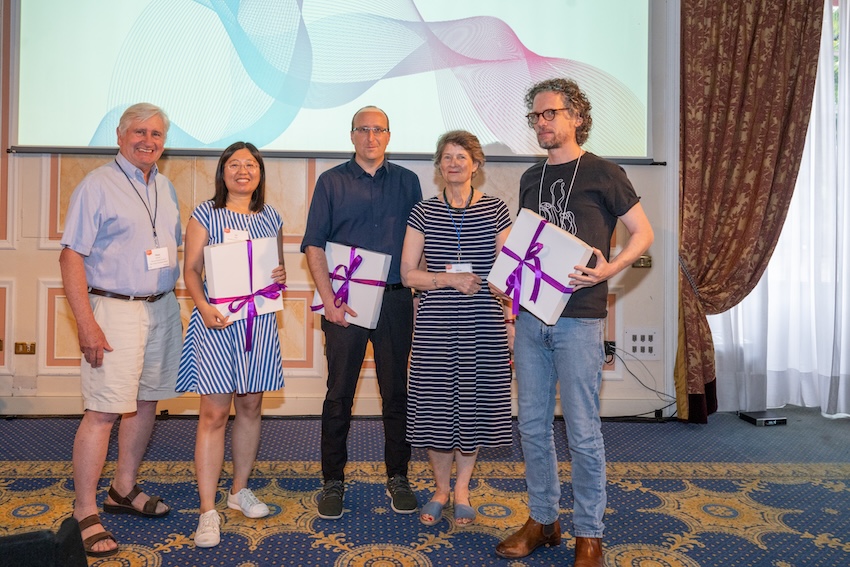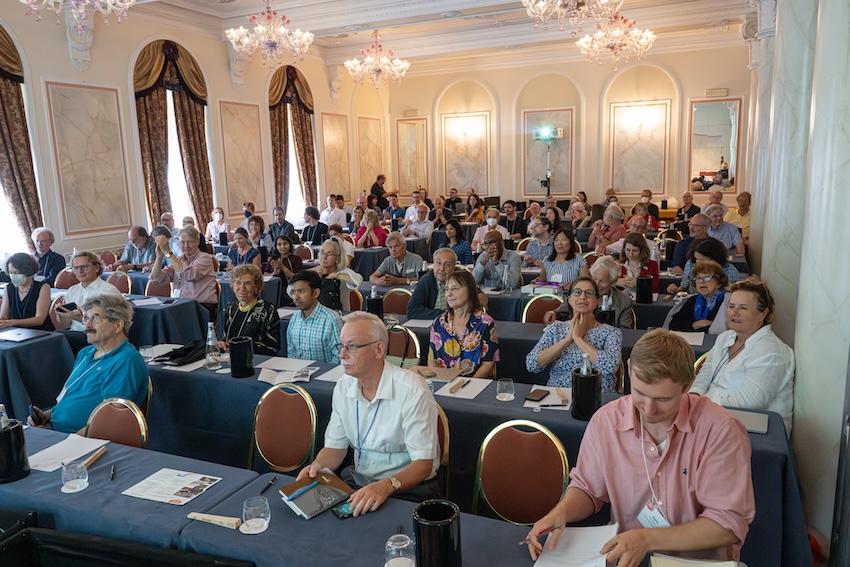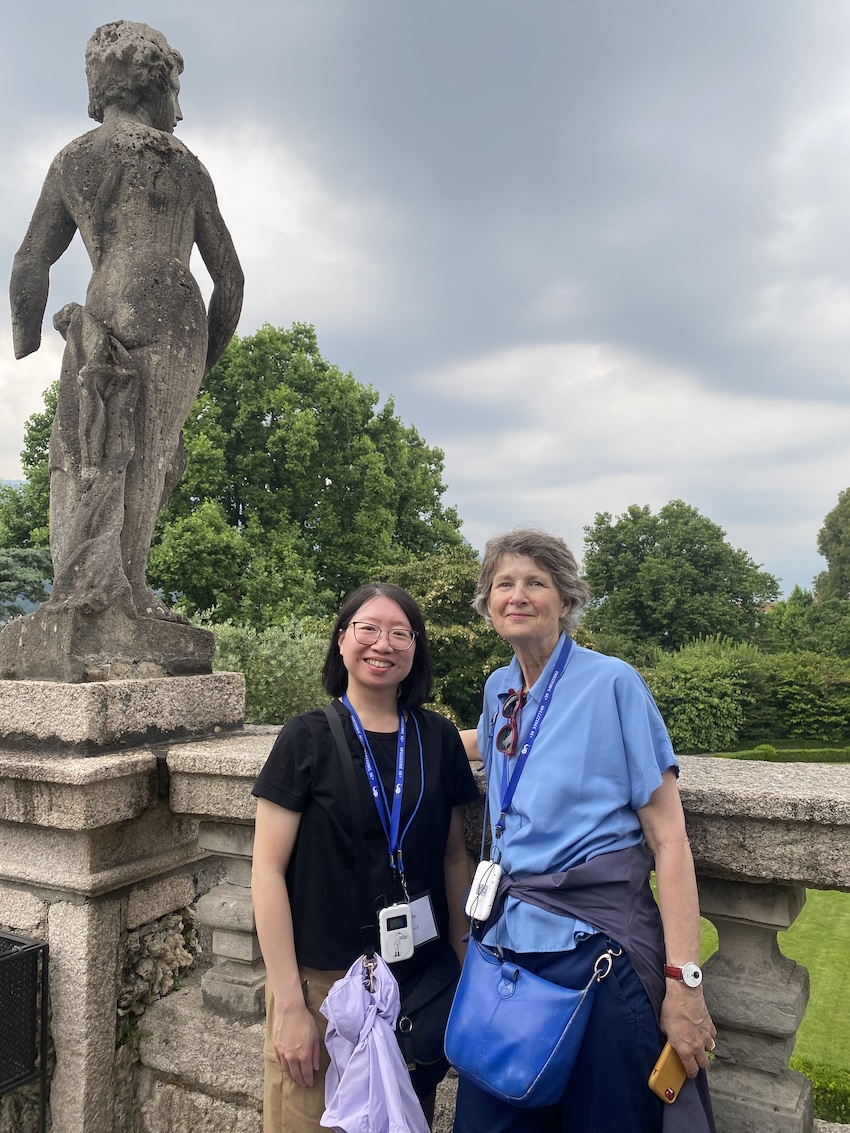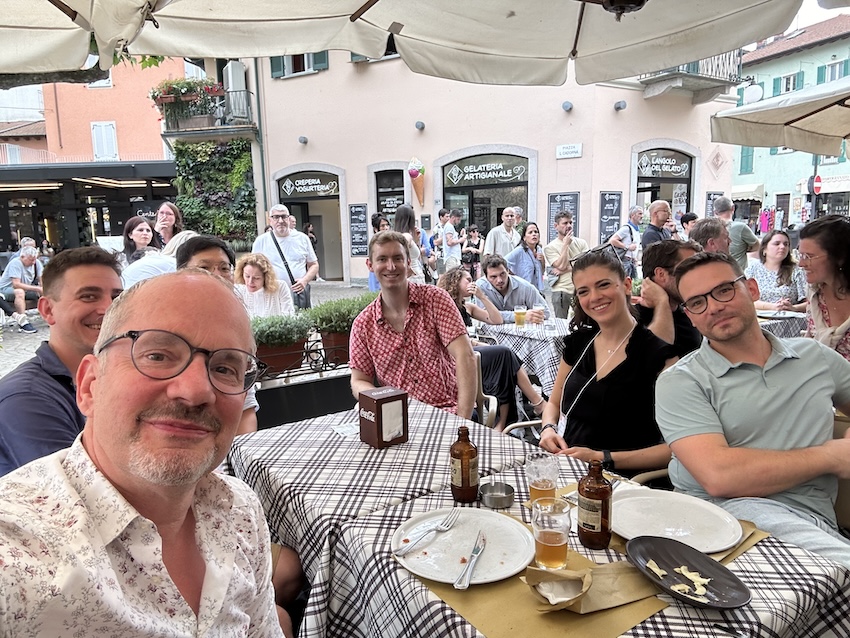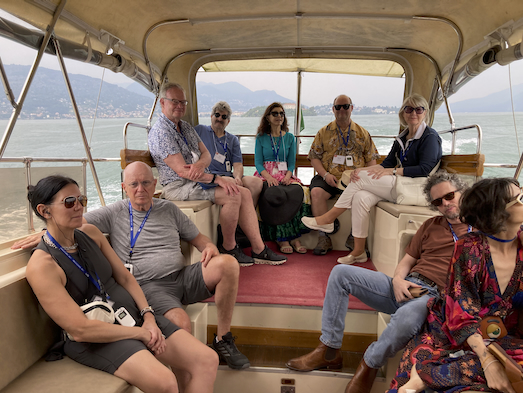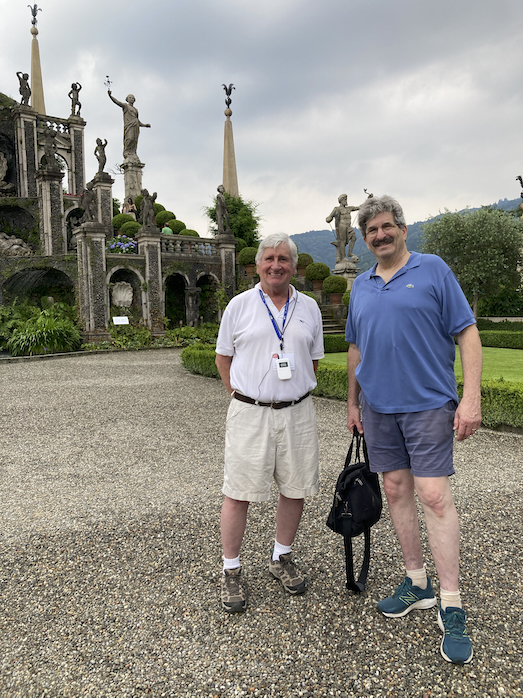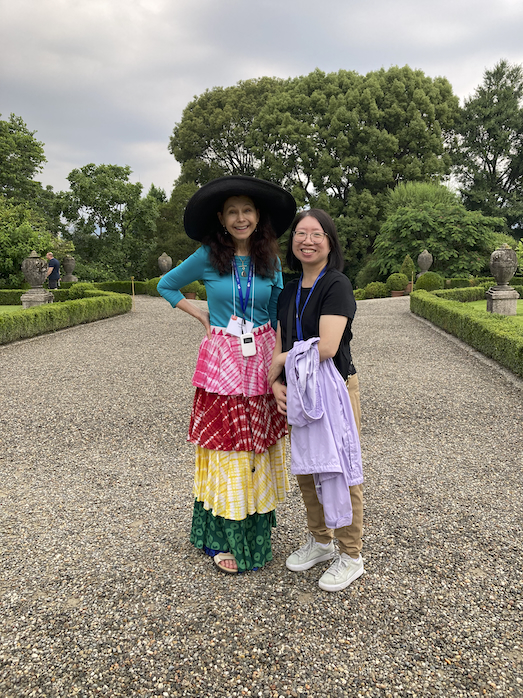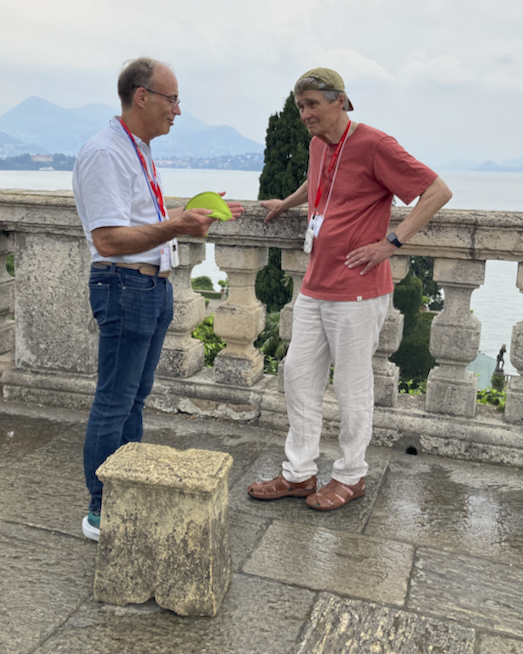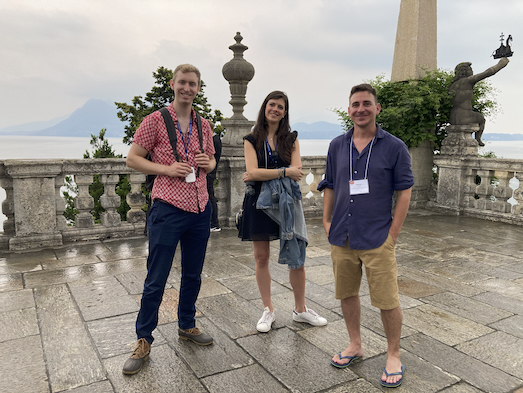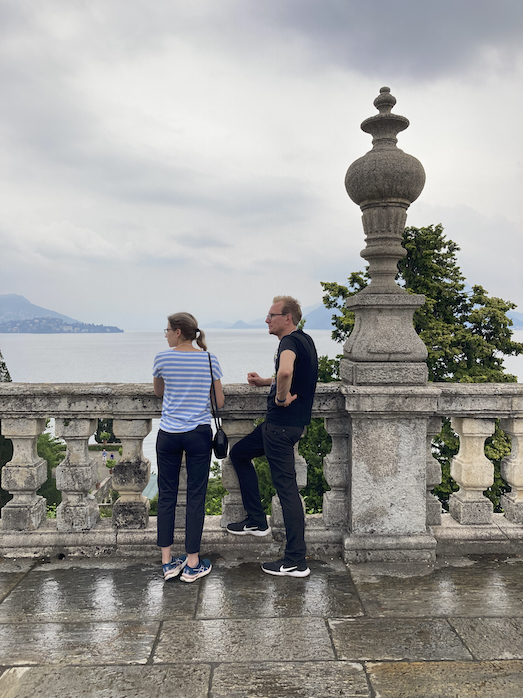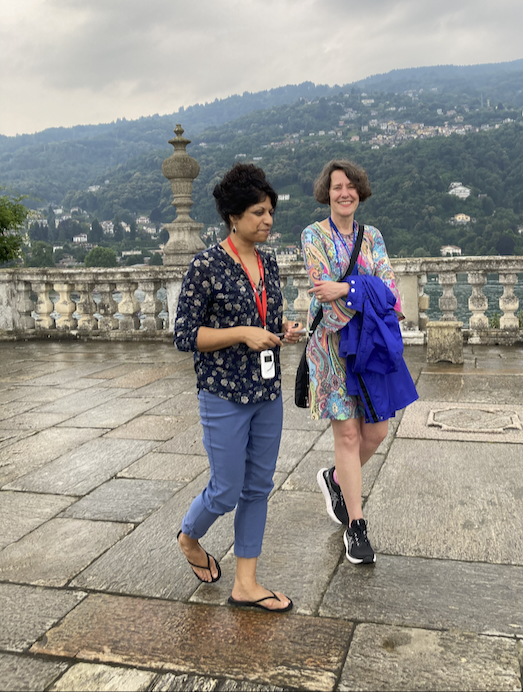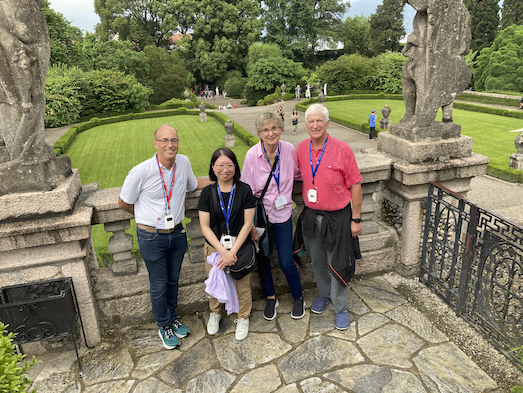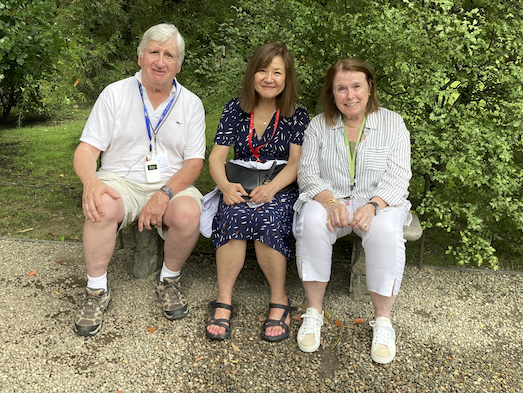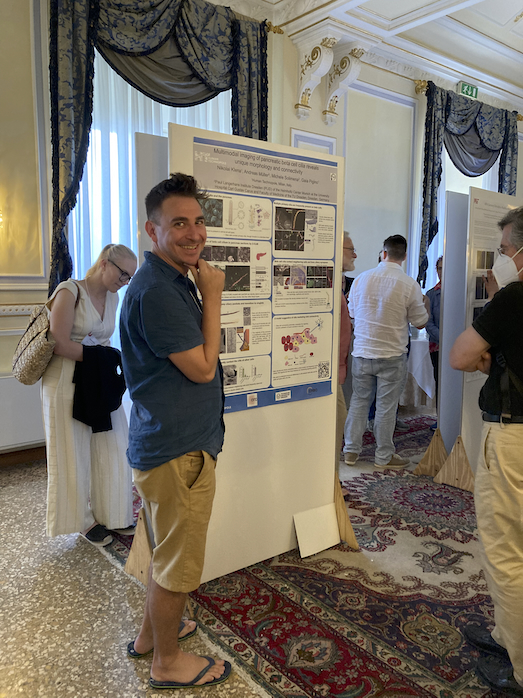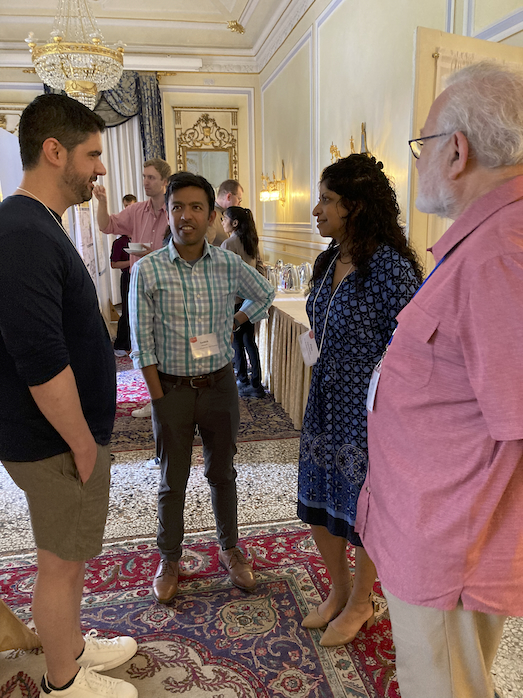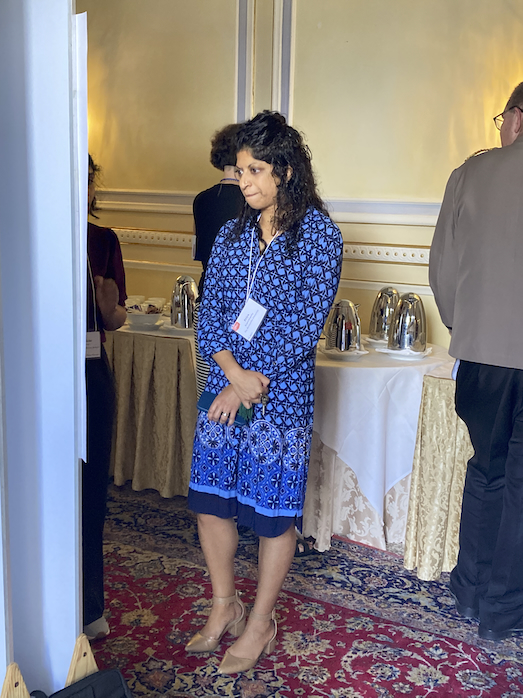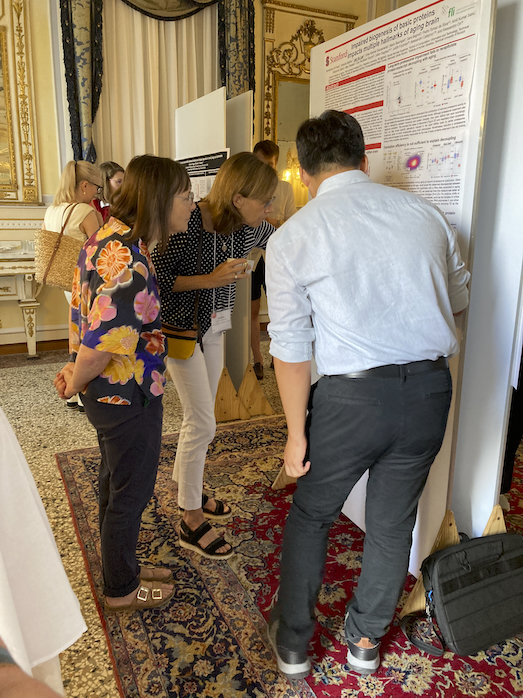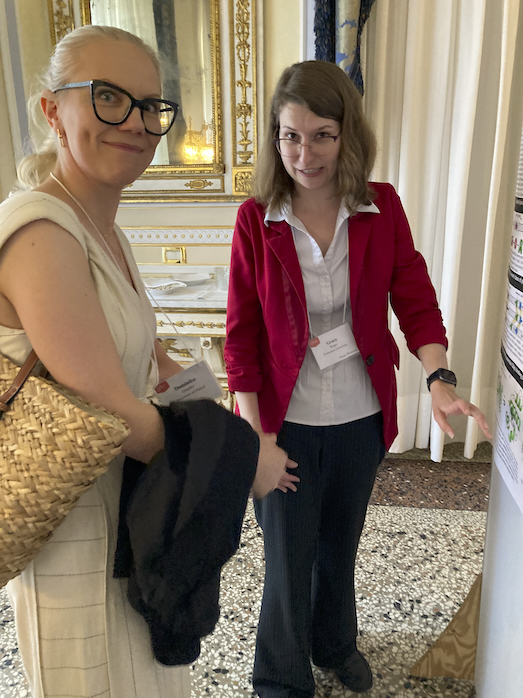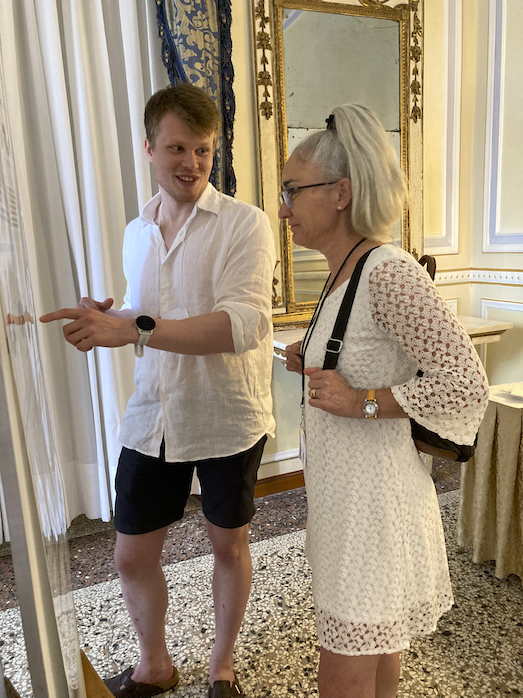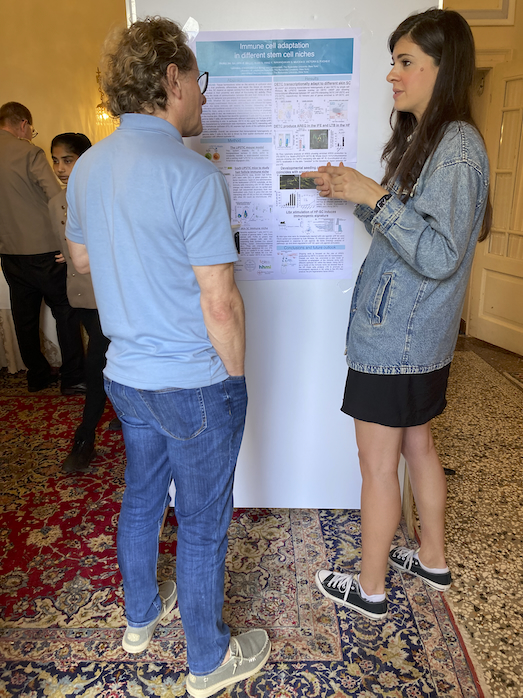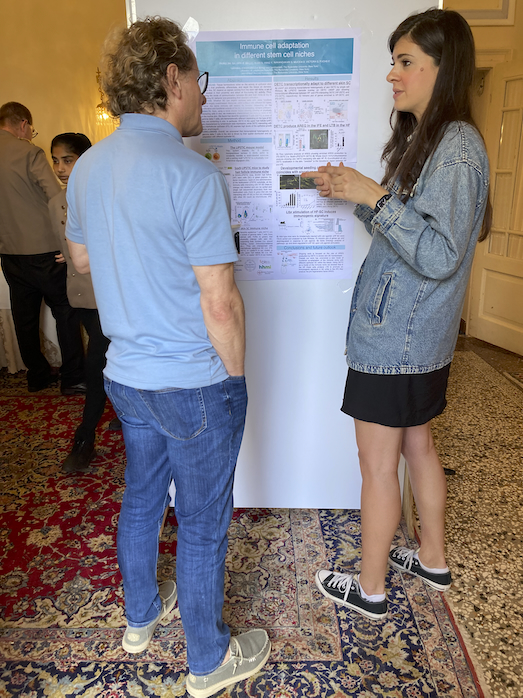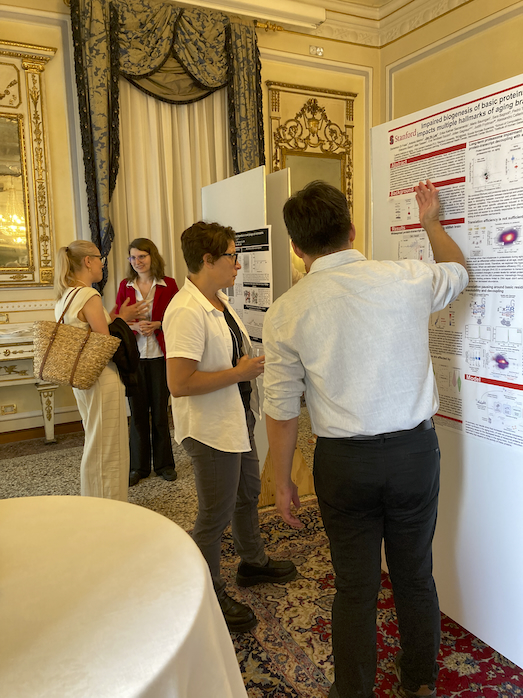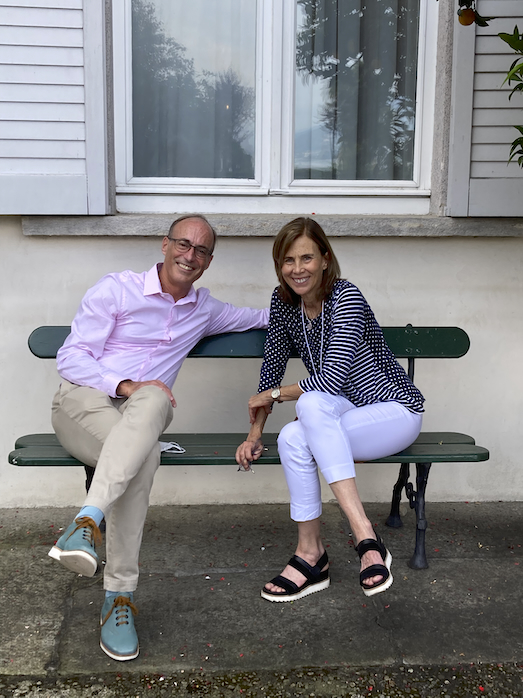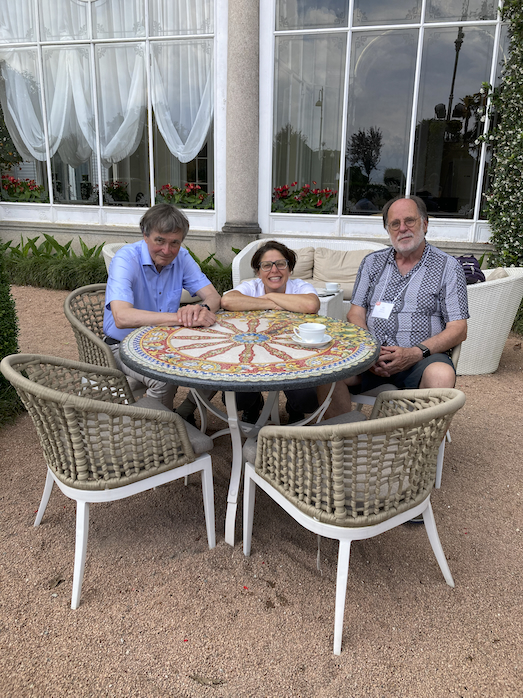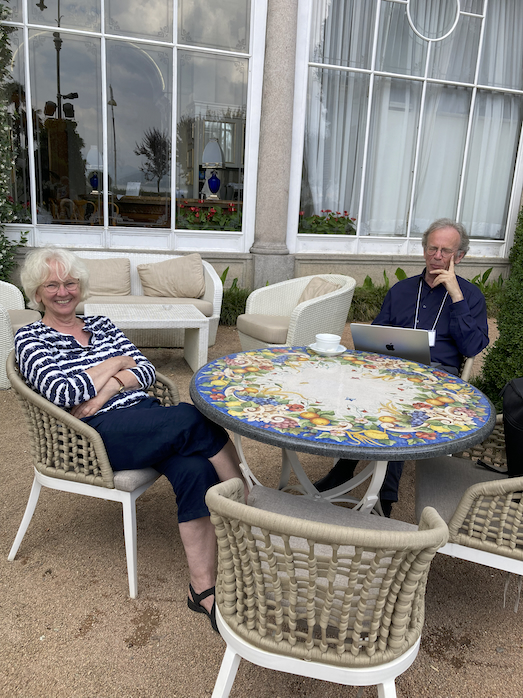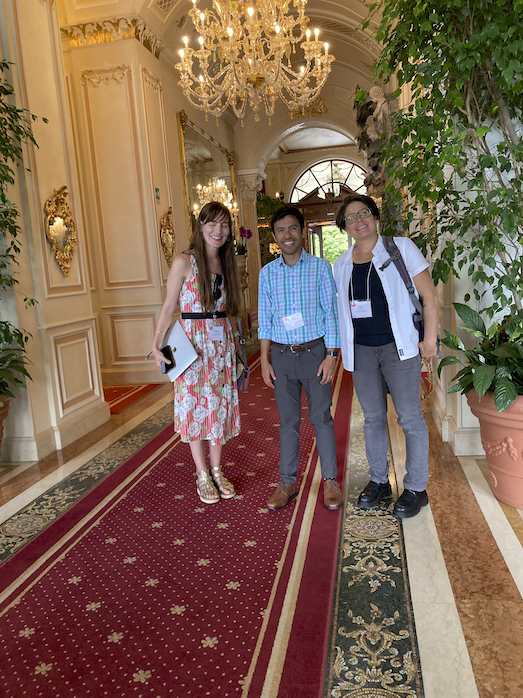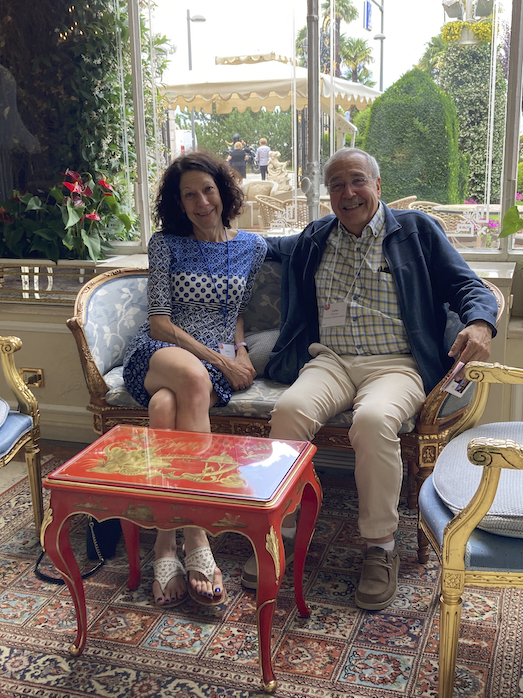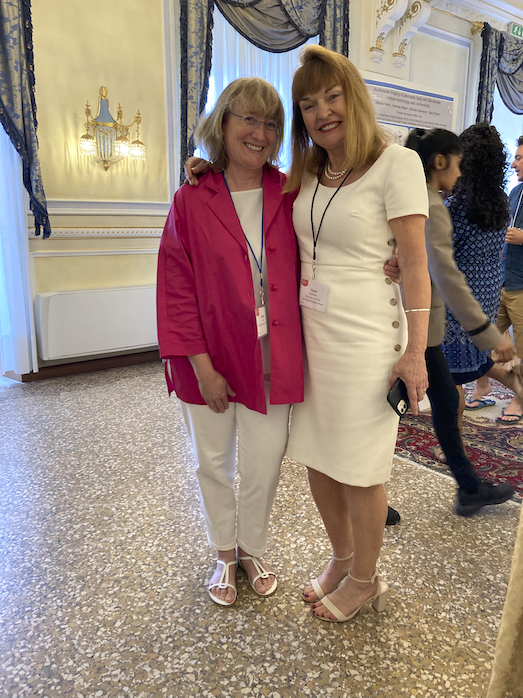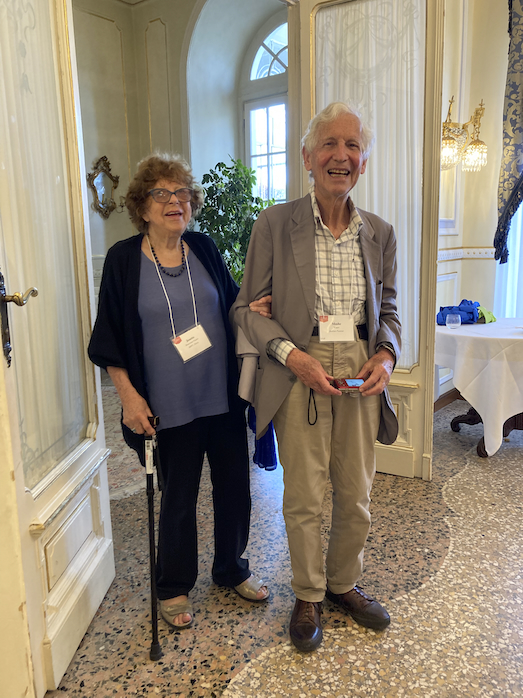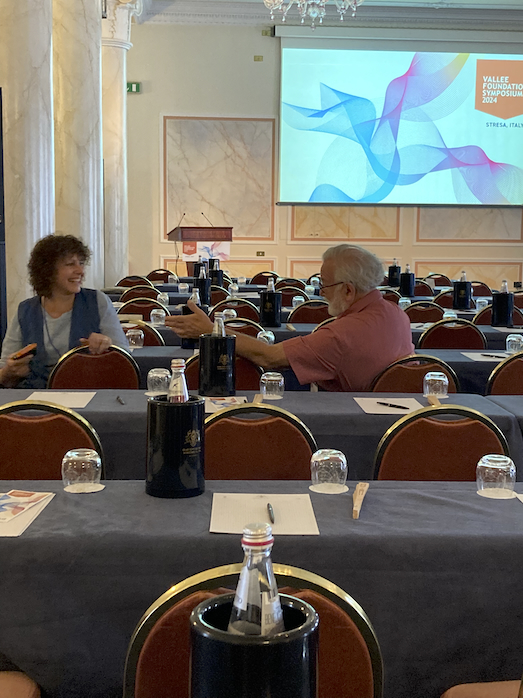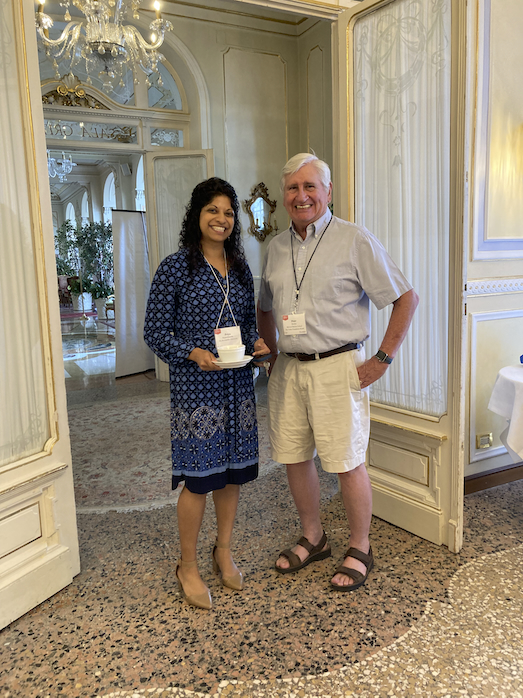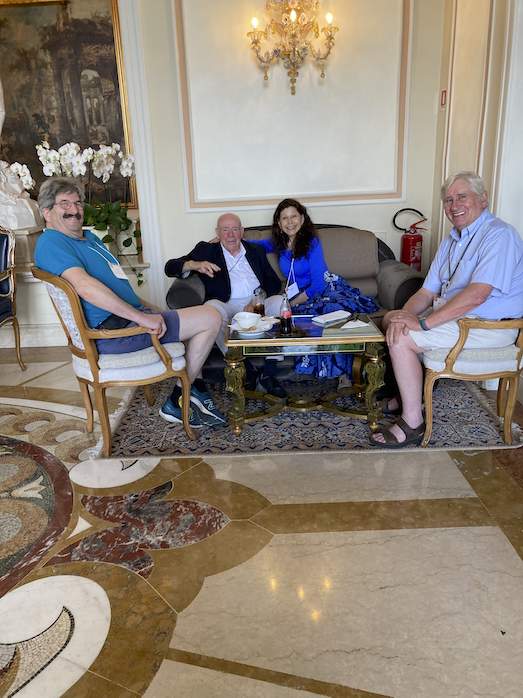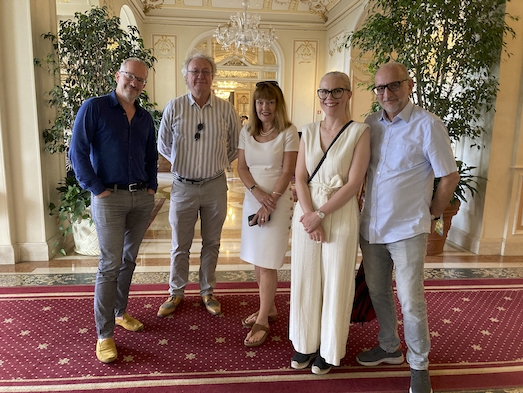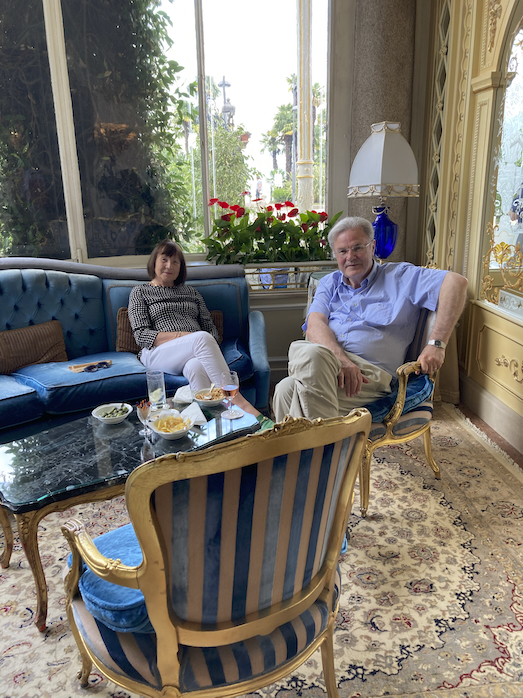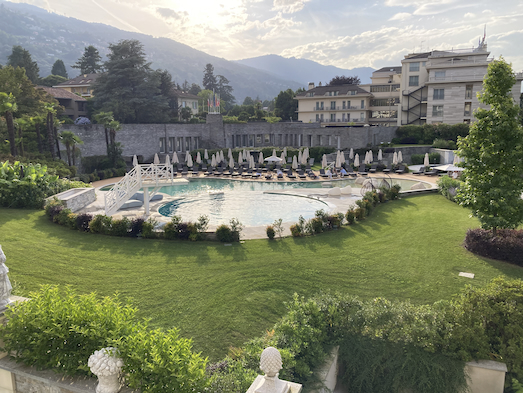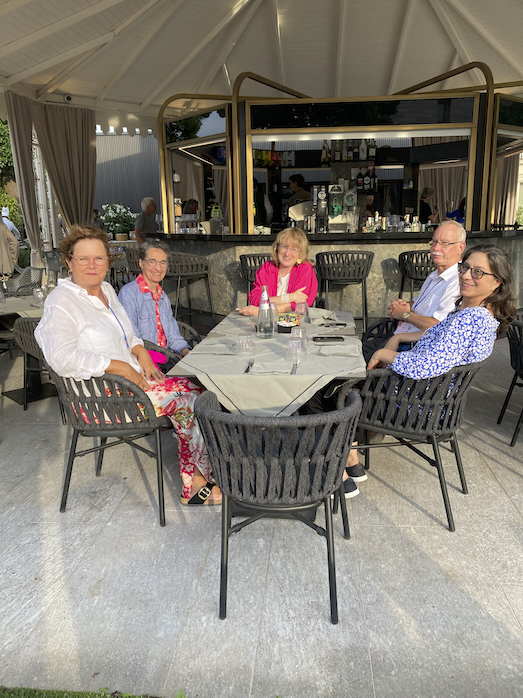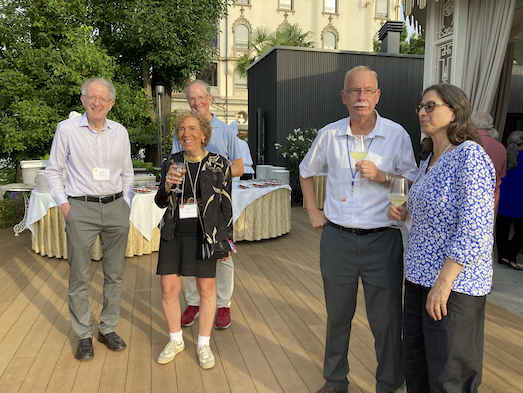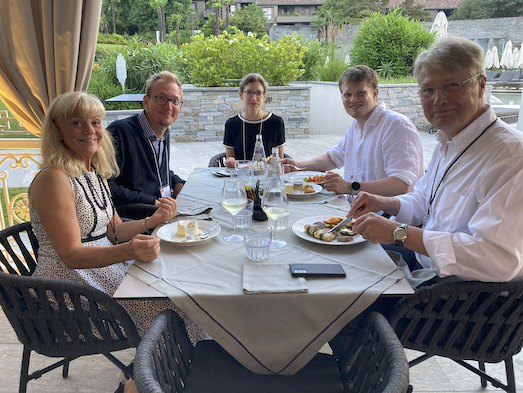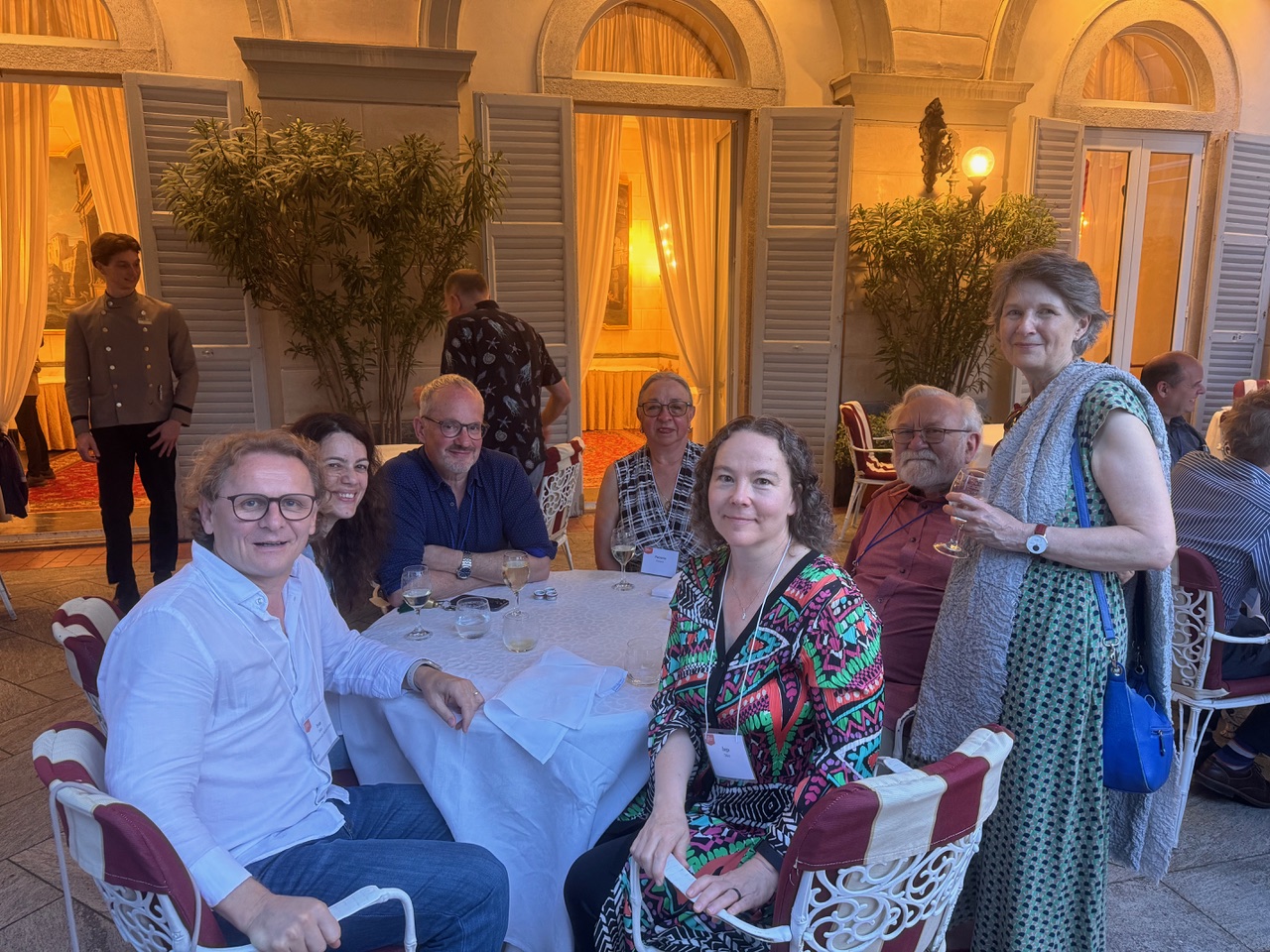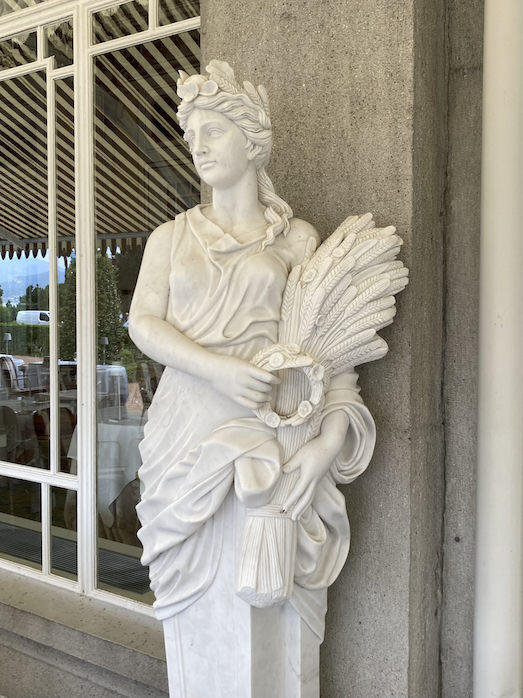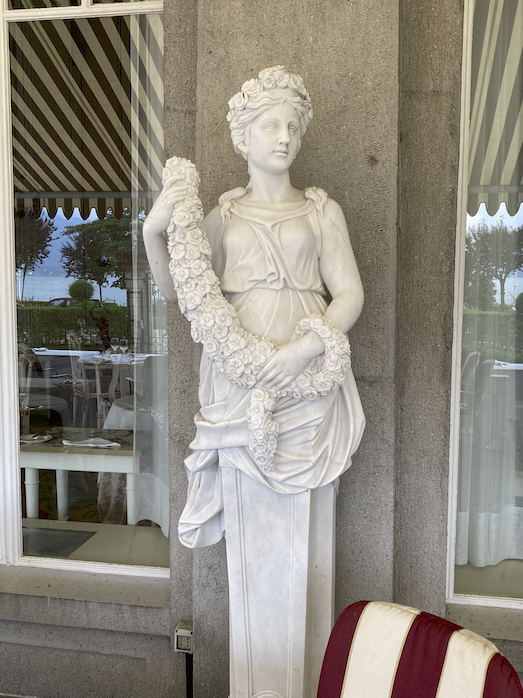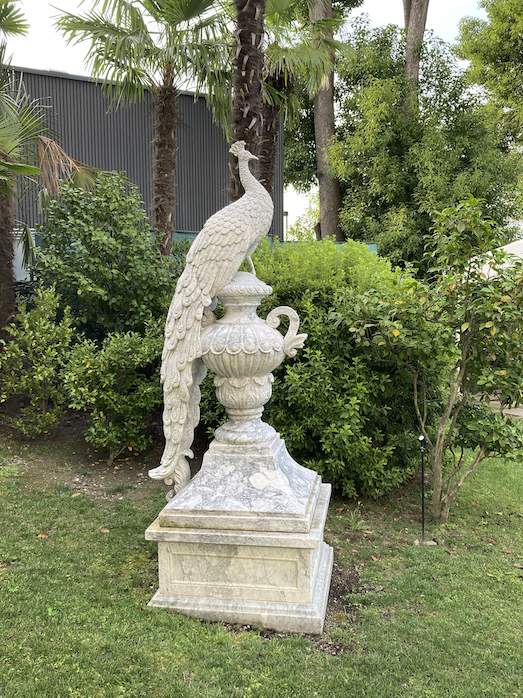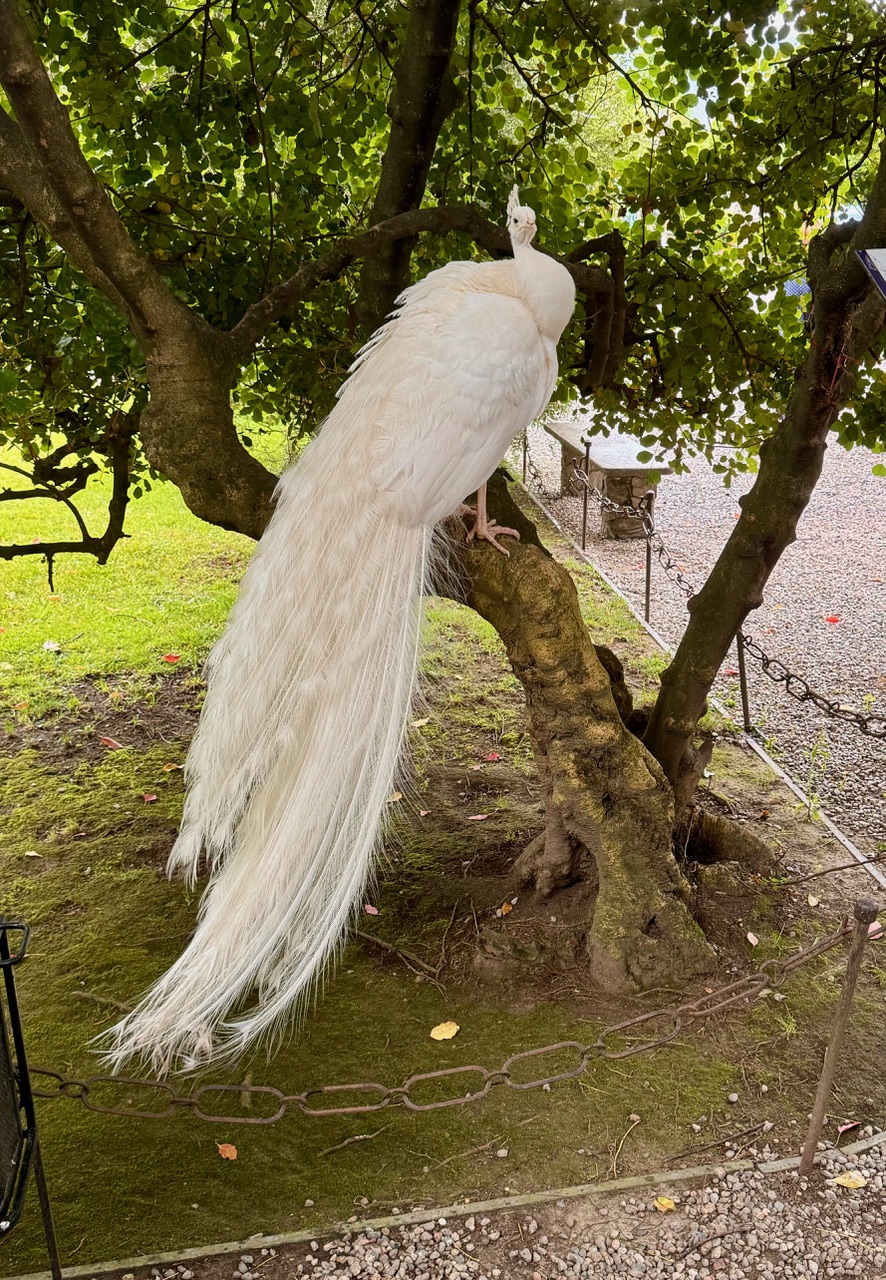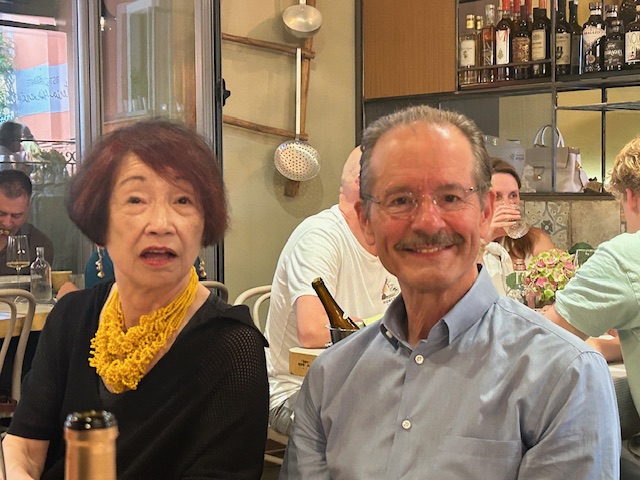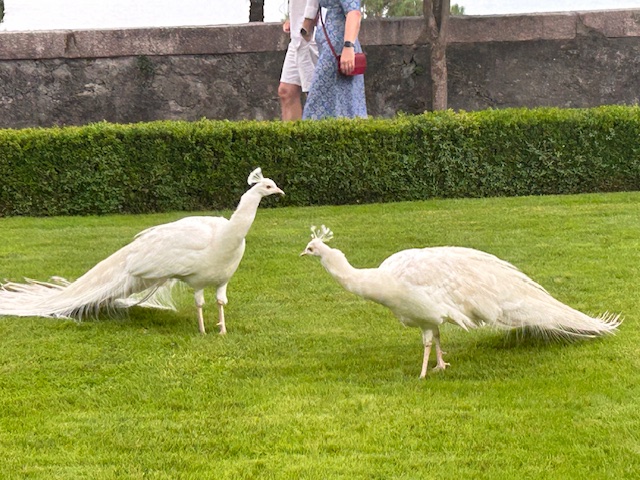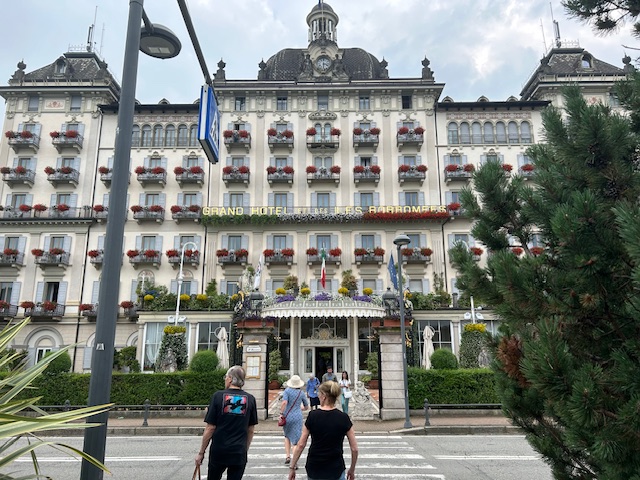Stresa, Italy
2024 Vallee Summer Symposium
Vallee Summer Symposium 2024
In the picturesque town of Stresa, nestled along the serene shores of Lago Maggiore, more than 120 delegates congregated for the 2024 Vallee Summer Symposium in late June. We were based at the elegant Grand Hotel des Iles Borromées with spectacular views of Isola Bella and all the way up the lake to Switzerland and the Alps. Vallee Visiting Professors and current Vallee Scholars from diverse fields in the biomedical sciences gathered from North America, Europe and Australia to exchange insights and forge new collaborations. All agreed that the science presented by the 13 speakers was outstanding, provided much food for thought, and fostered numerous follow-up discussions. Ten junior scientists presented their research at a poster session on the last day, and a boat trip to the islands provided an opportunity for casual conversation while visiting Palazzo Borromee and its beautiful gardens – where we were greeted by the famous white peacocks.
CHECK OUT THE PHOTO GALLERY BELOW THE PEACOCK!
The session chairs for the symposium were Vallee Visiting Professors Carla Shatz (Stanford University), Carol Robinson (Oxford University; Vallee Board Member), and Gary Ruvkun (Harvard Medical School).
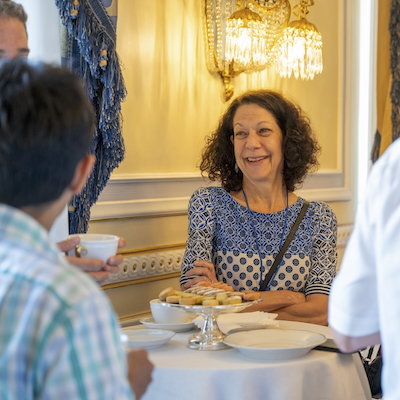
In the first talk, “Quorum Sensing Across Domains: From Viruses to Bacteria to Eukaryotes,” Bonnie Bassler (Princeton University) explained how Bacteria communicate with one another via the production and detection of secreted signal molecules called autoinducers. This cell-to-cell communication process, called “Quorum Sensing”, allows bacteria to synchronize behavior on a population-wide scale. Bonnie discussed new work showing that eukaryotes that harbor quorum-sensing bacteria participate in these chemical conversations by providing the substrates bacteria need to make autoinducers. She also reported that quorum-sensing autoinducer information can be hijacked by viruses that infect and kill bacteria. Thus, Bonnie’s seminar revealed that interactions across the eukaryotic, bacterial, and viral domains all rely on quorum sensing.
Next, Brenda Schulman (Max Planck Institute of Biochemistry, Martinsried) discussed her lab's discoveries of remarkable mechanisms that switch on the E3 ligases when needed, and inactivate and recycle subunits from idling complexes in a talk entitled “Signaling by the Ubiquitin System.” She also presented profiling the "active E3 ligase-ome" to define E3 ligases responding to extracellular signals and defining distinct cellular states (including such work in collaboration with VVPs Harper, Frydman, Baumeister, and Hartl).
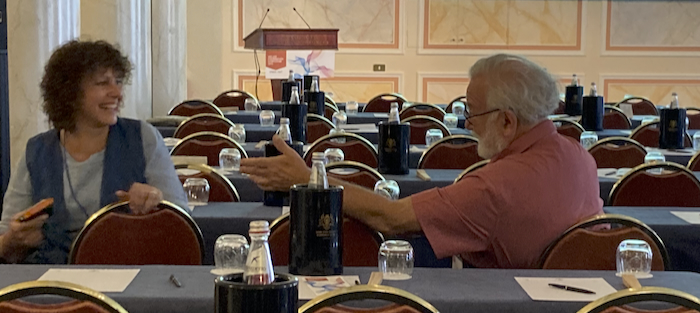 Gaia Pigino, (Human Technopole, Milan) then gave a talk entitled “Structure and dynamics of the cilium transport system by cryo-ET et al” in which she explained how recent advances in hardware and computational methods for cryo-EM have enabled in situ cryo-electron tomography to become one of the most powerful tools to visualize and understand cellular processes at molecular resolution.
Gaia Pigino, (Human Technopole, Milan) then gave a talk entitled “Structure and dynamics of the cilium transport system by cryo-ET et al” in which she explained how recent advances in hardware and computational methods for cryo-EM have enabled in situ cryo-electron tomography to become one of the most powerful tools to visualize and understand cellular processes at molecular resolution.
In her talk, “Protein Synthesis at Neuronal Synapses,” Erin Schuman (Max Planck Institute for Brain Research, Frankfurt) discussed the enormous proteostatic challenge the individual neuron faces with its huge volume and elaborate, polarized morphology. She described the de-centralization of protein synthesis machinery to sites near neuronal synapses as one solution to supply proteins to remote processes and dendrites. She highlighted new, unpublished cryo-electron tomography findings in which neuronal ribosomes are visualized and their translation status quantified. The data indicated a surprising ribosome dimer that forms during cellular stress and is mediated by an rRNA expansion segment interaction.
Vallee Scholar Michael Yartsef (University of California, Berkeley) explored the “Neural mechanisms of natural spatial behavior” and presented studies in bats highlighting the importance of properly selecting the right species for the scientific question at hand. His research demonstrates fundamental aspects of neural computations related to how space is represented in the mammalian hippocampus. In particular, he demonstrated how the representation of self-position in space is largely non-local yet highly stable across days and weeks.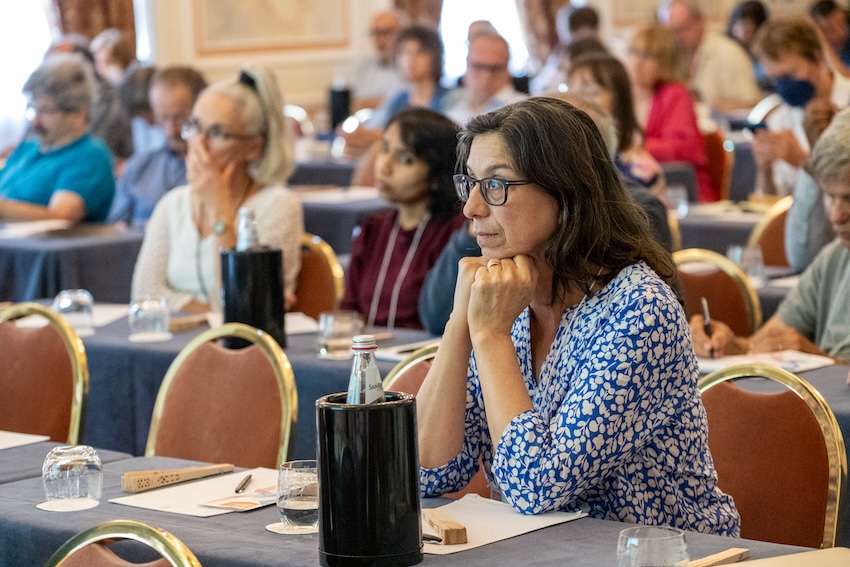
The last talk on Saturday morning, was given by Li-Huei Tsai (Picower Institute, MIT).
Rhythmic neural activity in the gamma range (30-80 Hz) is modulated during various aspects of cognitive function and is disrupted in several neurological conditions, including Alzheimer's disease (AD). Li-Huei reported on an approach developed in her lab, which they term Gamma ENtrainment Using Sensory stimuli (GENUS), and which uses patterned light and sound stimulation at 40 Hz in AD model mice to evaluate the effects of boosting gamma oscillations. She showed GENUS augmented gamma power in multiple brain regions. Moreover, daily application markedly reduced amyloid and tau pathology, attenuated degeneration of neurons and synapses, and improved cognitive function in multiple AD mouse models. GENUS also enhanced glial-mediated and lymphatic-like brain waste clearance, known as glymphatic clearance, in a VIP interneuron dependent manner. Based on these studies, she hypothesized that gamma entrainment with light and sound can be used as a disease-modifying therapeutic for AD.
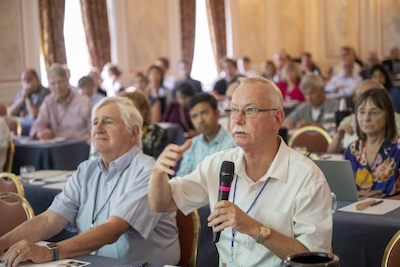
Sunday’s science sessions included talks on protein folding and cell biology. Newly-synthesized polypeptides depend on molecular chaperones to reach their folded states efficiently and at a biologically relevant time scale. These machineries are also of great medical relevance, as protein misfolding and aggregation underlies multiple pathologies. In his talk entitled “Chaperone-assisted protein folding in health and disease” Ulrich Hartl (Max Planck Institute of Biochemistry, Martinsried) introduced the mechanisms molecular chaperones use in modulating the energy landscape of protein folding, thereby promoting folding and suppressing off-pathway aggregation. He illustrated this using recent unpublished results providing a structural vista of folding by the GroEL/GroES chaperonin system. The second part of the talk focused on the role of chaperone machineries in the context of diseases like Alzheimer’s and Parkinson’s. He ended with recent findings demonstrating the role of the chaperone VCP in dissociating the fibrillar aggregates that characterize these pathologies.
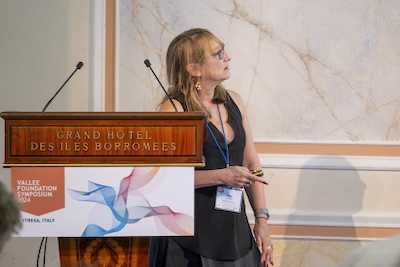
Judith Frydman (Stanford University) followed up with a talk entitled “The Making of Proteome: Protein Folding and Quality Control from the Cradle to the Grave.”
Peter Walter (Altos Labs) spoke about the promise of modulating cell stress pathways to reestablish homeostasis and cell health. The focus of his talk was the integrated stress response (ISR) that can be pharmacologically regulated with a small molecule (ISRIB, for ISR inhibitor). Molecularly, ISRIB is well characterized as an allosteric modulator of the guanosine nucleotide exchange factor eIF2B, which is prevents from becoming inhibited after ISR induction. Remarkably, ISRIB restores brain health in numerous mouse models of diseases characterized by cognitive dysfunction and dementia, including traumatic brain injury (TBI). Peter presented results obtained by Elma Frias in collaboration with Susanna Rosi and Michael Stryker showing that after TBI dendritic spines are abnormally dynamic compared to healthy brains and that blocking the ISR with ISRIB effectively restores normal dendrite behavior and brain health. ISRIB analogs are currently in clinical trial under the tradename Fosigosifator at Calico Life Sciences.
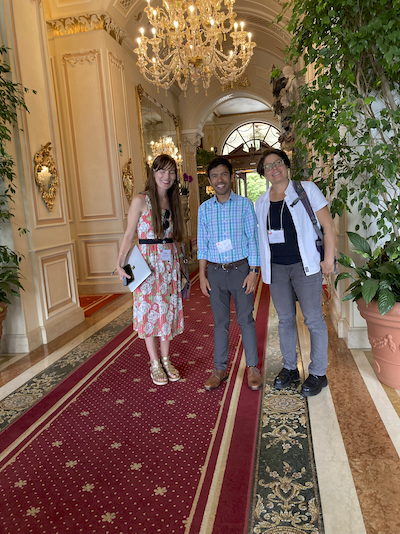 In her talk entitled “Fighting with the Neighbours: how cell competition shapes tissue development and disease in mammalian skin,” Vallee Scholar Stephanie Ellis (University of Vienna) discussed how stem cells in the developing skin are subject to a survival-of-the-fittest selection process known as cell competition. Her work shows that cells that have various types of defects (“losers”) are sensed by the more fit neighbors (“winners”) and eliminated before they contribute to adult tissues and have the opportunity to cause disease.
In her talk entitled “Fighting with the Neighbours: how cell competition shapes tissue development and disease in mammalian skin,” Vallee Scholar Stephanie Ellis (University of Vienna) discussed how stem cells in the developing skin are subject to a survival-of-the-fittest selection process known as cell competition. Her work shows that cells that have various types of defects (“losers”) are sensed by the more fit neighbors (“winners”) and eliminated before they contribute to adult tissues and have the opportunity to cause disease.
The morning concluded with a talk from Elena Conti (Max Planck Institute for Biochemistry, Munich) who presented an overview of the new direction her lab has taken, stemming from her VVP sabbatical five years ago. Elena discussed current research efforts aimed at understanding how eukaryotic cells package their mRNAs to safely transport them through the cellular milieu to the protein synthesis machineries. Through the development of appropriate biochemical and structural approaches, she highlighted emerging global principles governing the packaging of mRNAs and mRNA-binding proteins into dense particles (mRNPs) in the nucleus of budding yeast. Building on this foundation, she shared ongoing, unpublished work on isolating and analyzing mRNPs in a more complex system, specifically within the fly developing embryo.
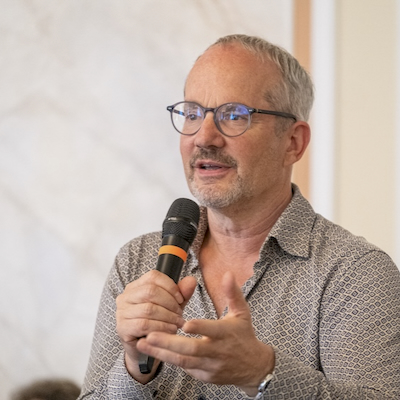 The afternoon began with a fascinating poster session in the Sala Gritti where ten trainees presented their recent work and continued with a talk from Anthony A Hyman (Max Planck Institute of Molecular Cell Biology & Genetics) on “Phase separation in cell physiology and disease.” He spoke about how the description of phase separation provided a framework to thik about formation of compartments in cells, and how when this goes wrong it can lead to disease.
The afternoon began with a fascinating poster session in the Sala Gritti where ten trainees presented their recent work and continued with a talk from Anthony A Hyman (Max Planck Institute of Molecular Cell Biology & Genetics) on “Phase separation in cell physiology and disease.” He spoke about how the description of phase separation provided a framework to thik about formation of compartments in cells, and how when this goes wrong it can lead to disease.
Kinesin and dynein, motor proteins that move in opposite directions along microtubules, govern the spatial distribution of mitochondria in response to cellular stress and local energy needs. However, the mechanism for switching between kinesin- and dynein-driven transport in response to these cues remains unknown. In his talk, the “Impact of AlphaFold on Cell Biology,” Ron Vale (Howard Hughes Medical Institute, Janelia Research Campus) discussed how he developed a cellular synthetic-cargo transport assay and AlphaFold to dissect a structural mechanism for understanding how mitochondria switch between kinesin and dynein motility.
Ron concluded the meeting with resounding thanks to the organizers Alexa Mason, Amanda Chin, Amanda Pullen and Darren Grange.
